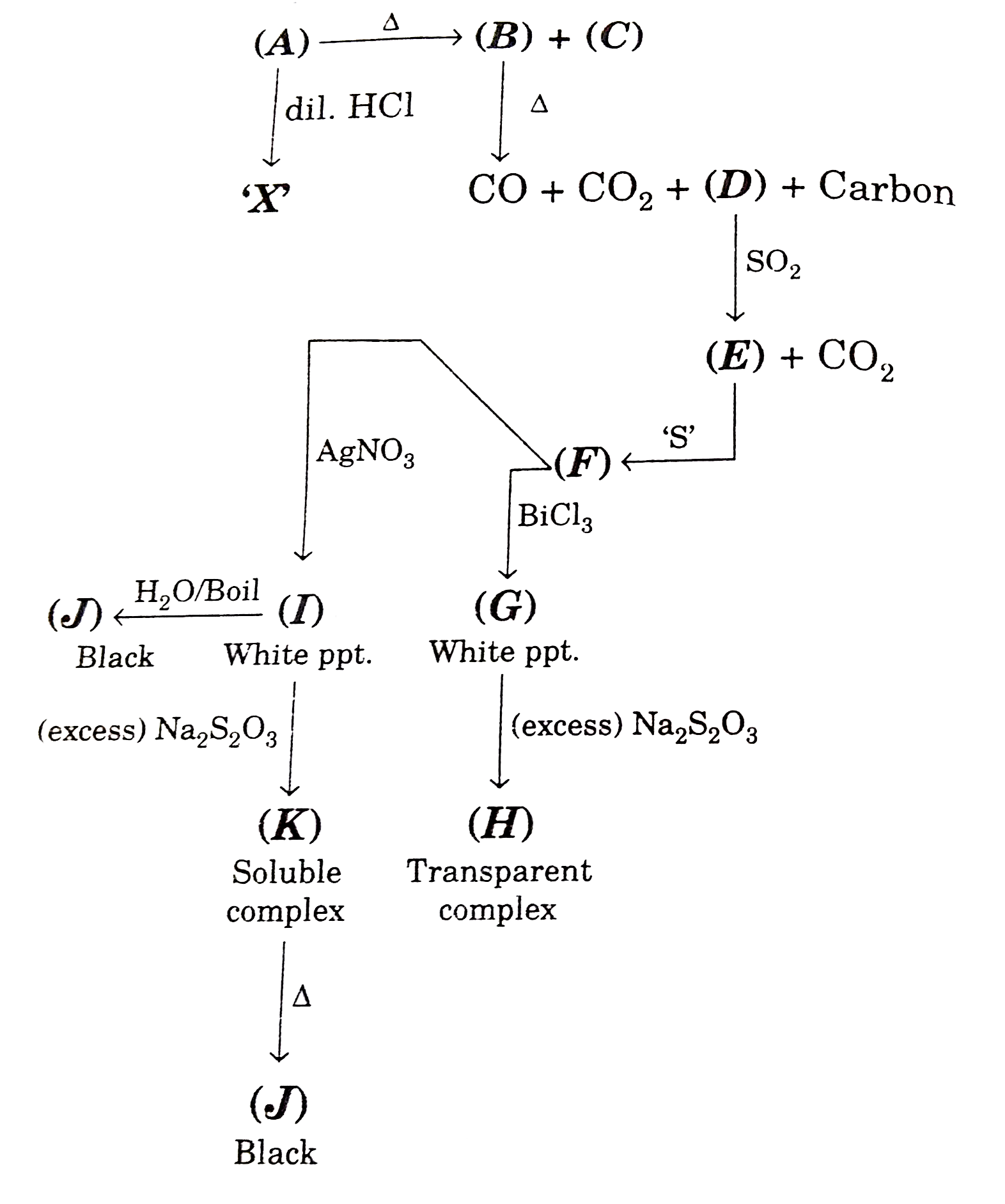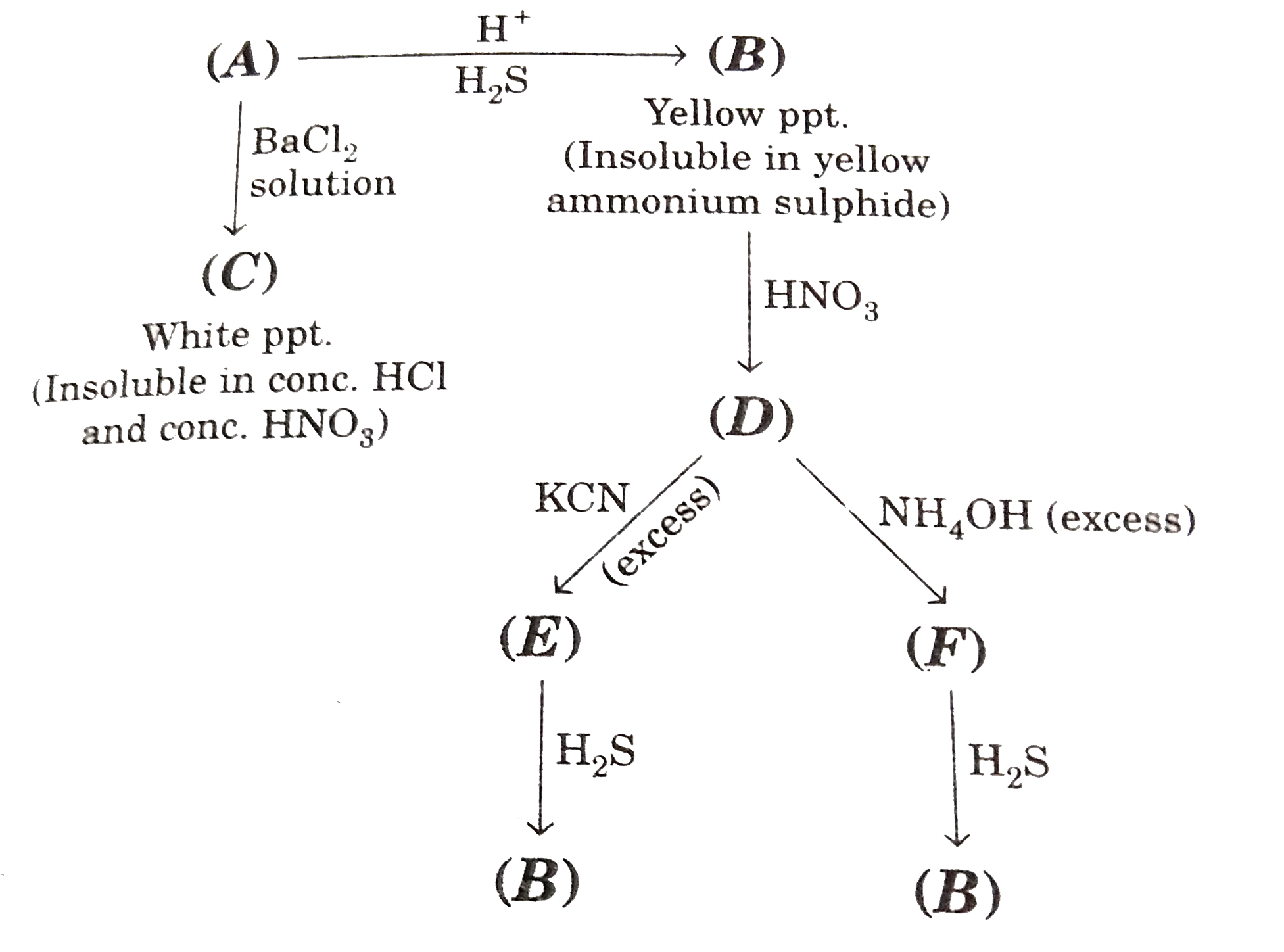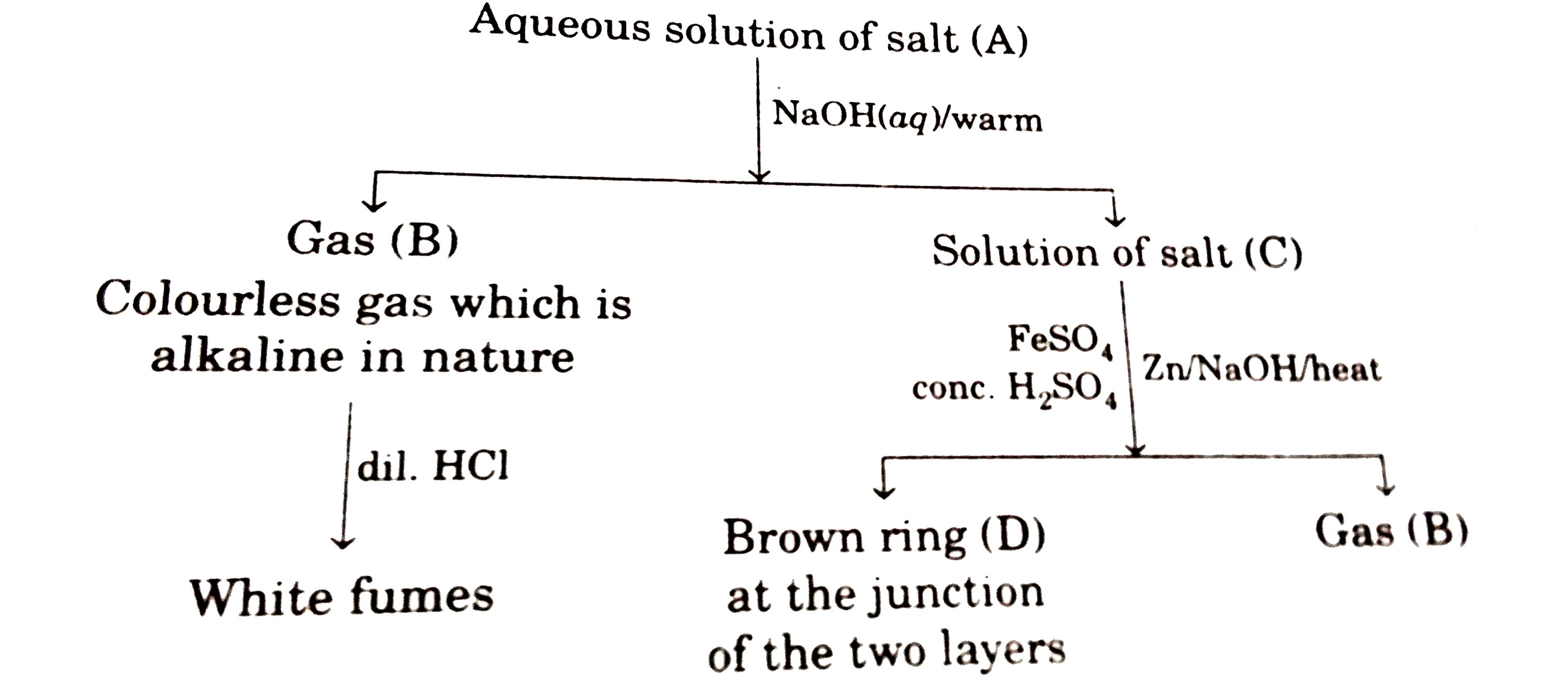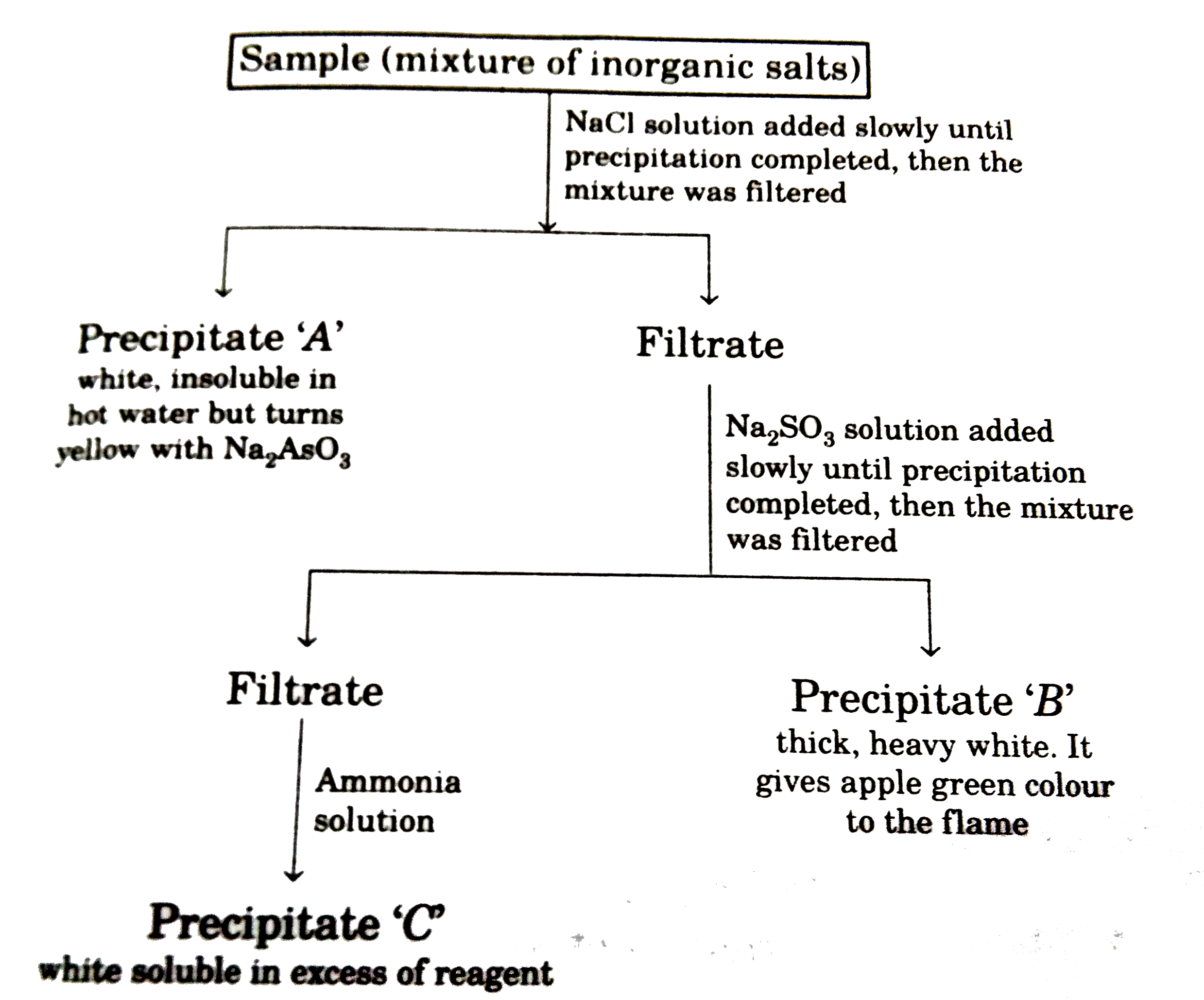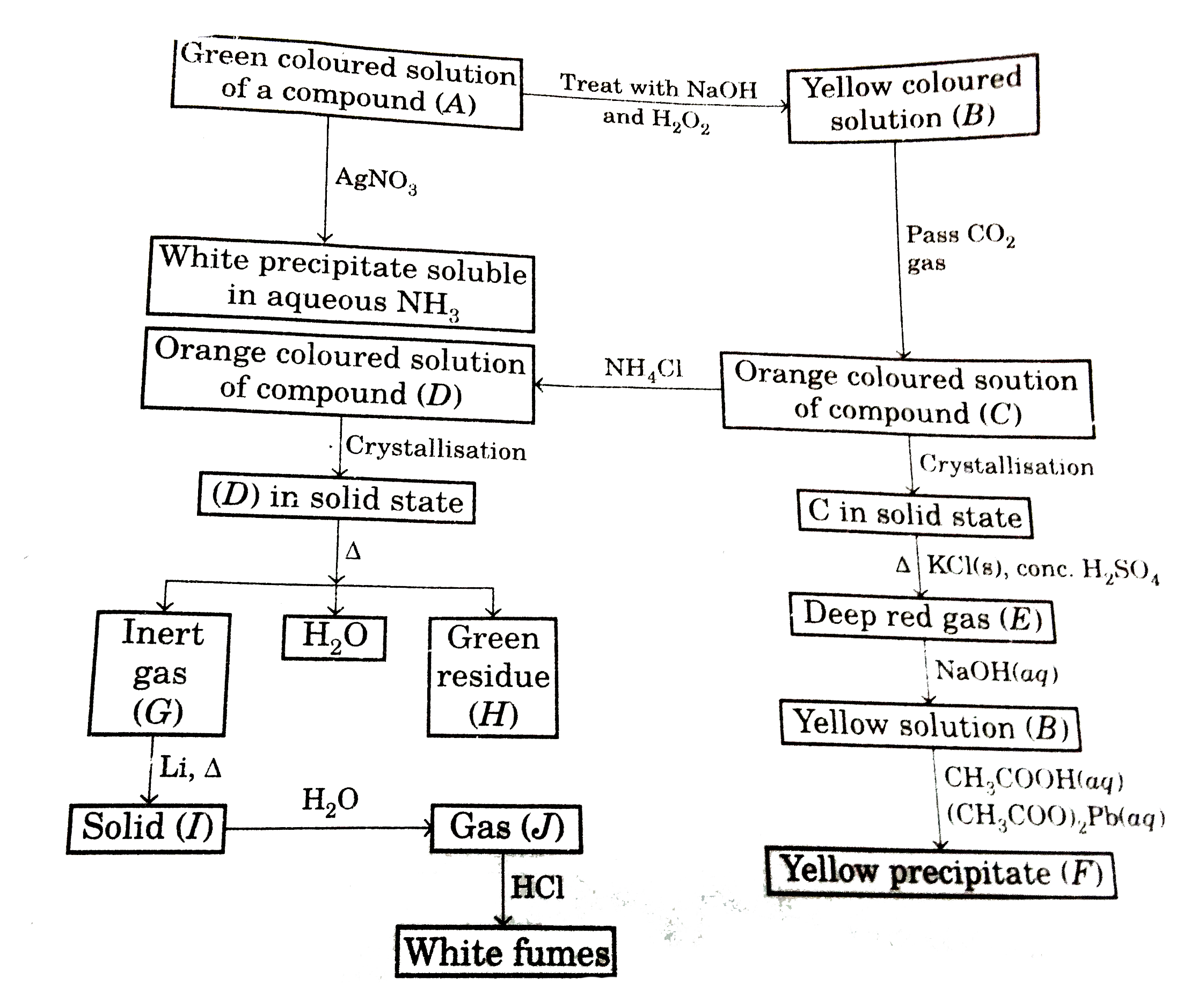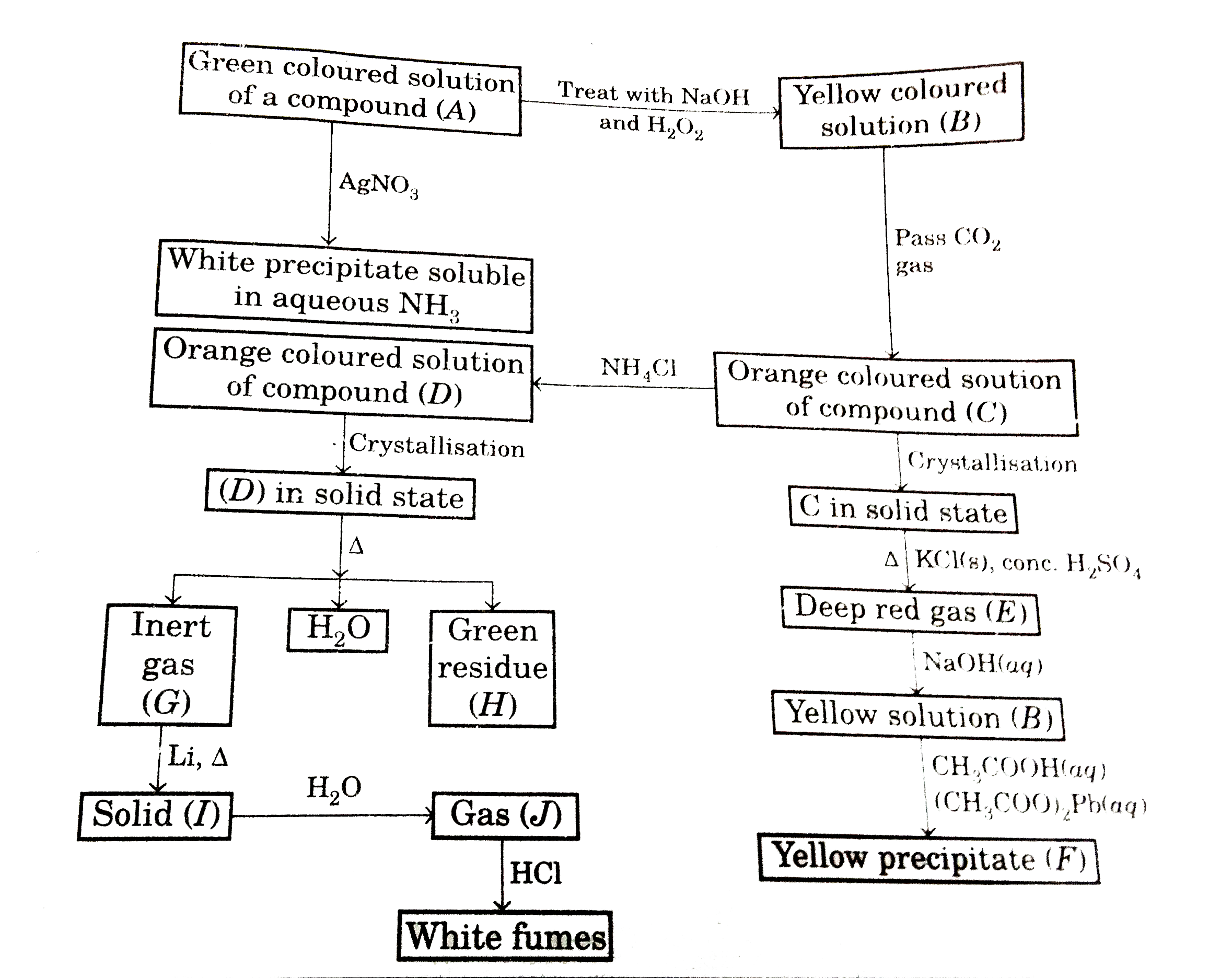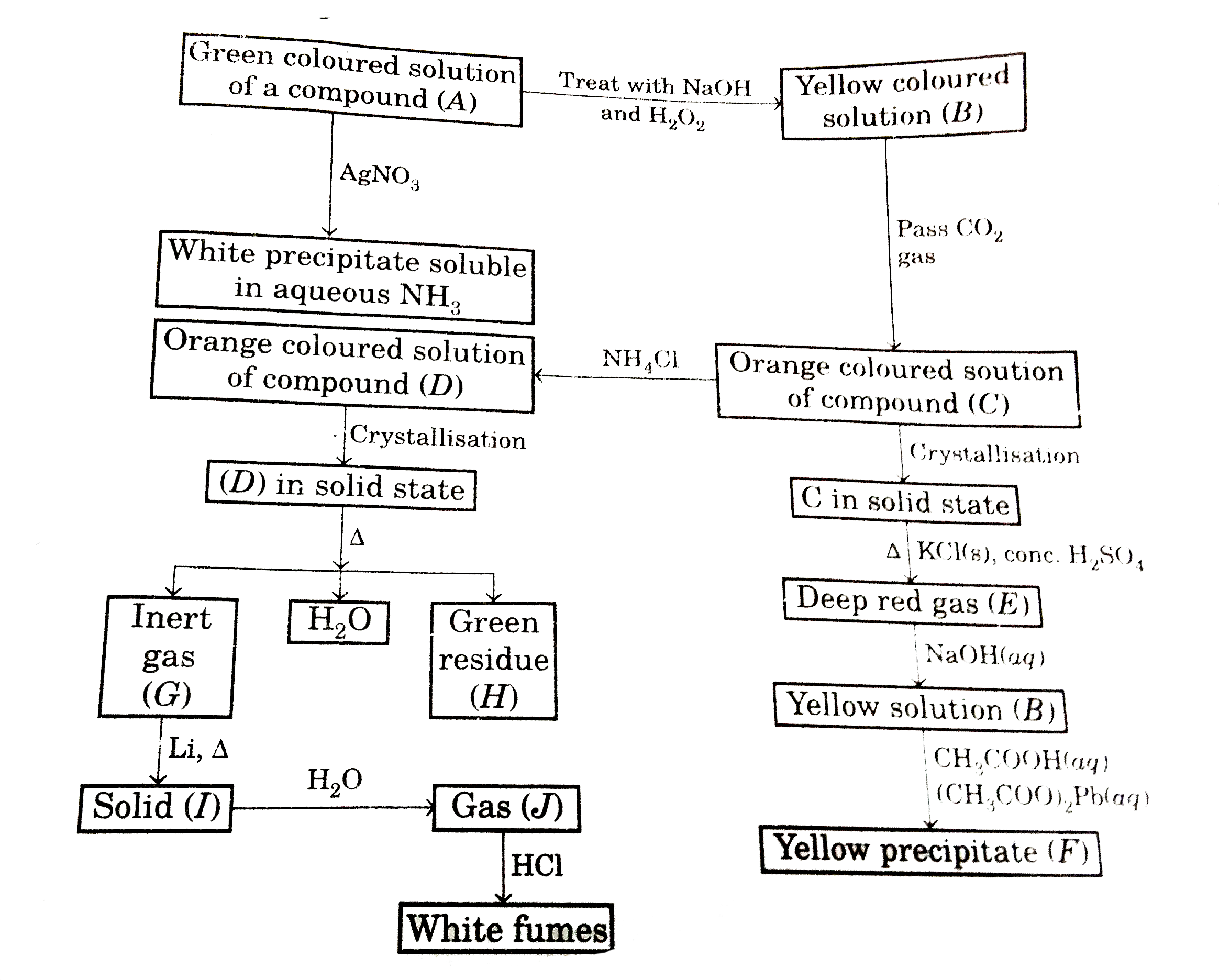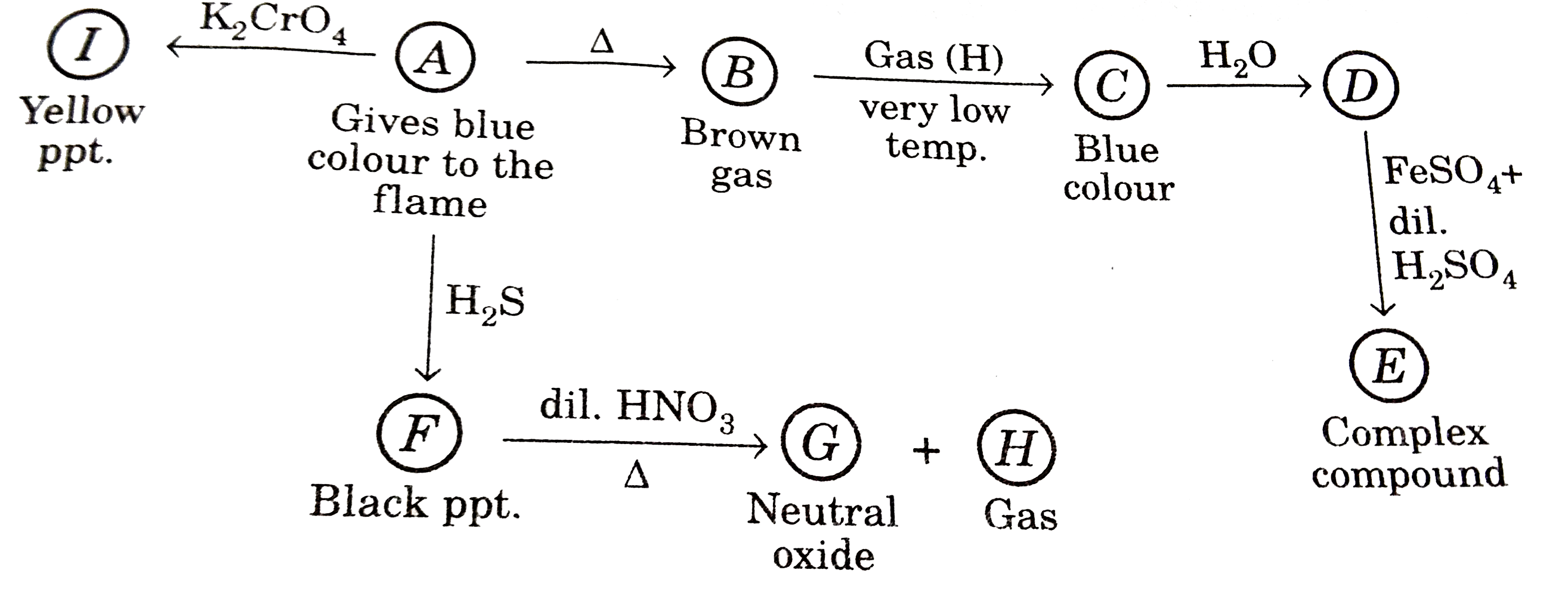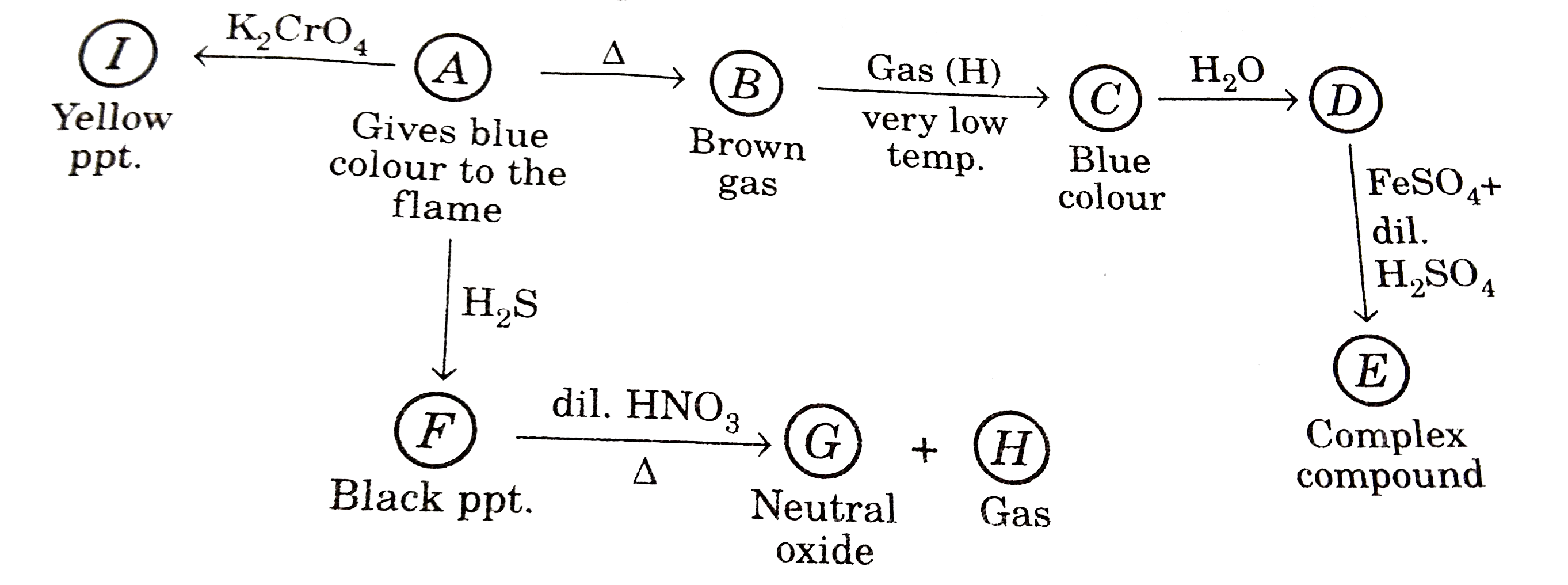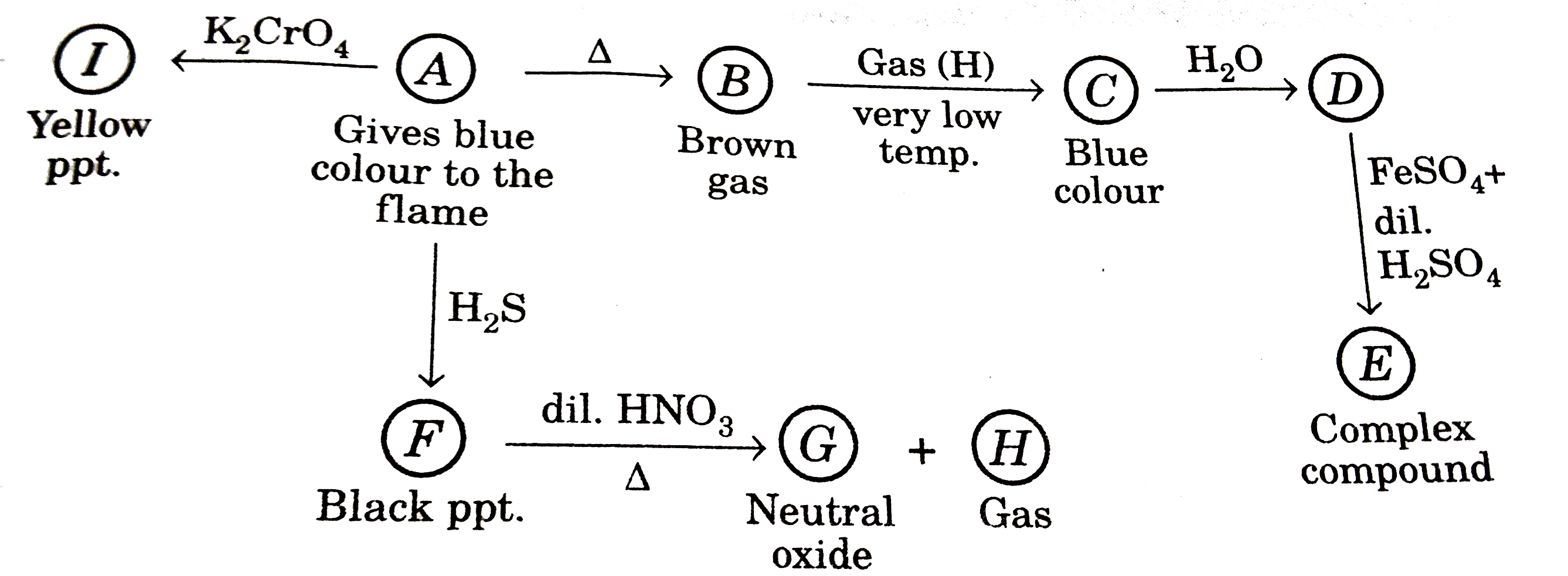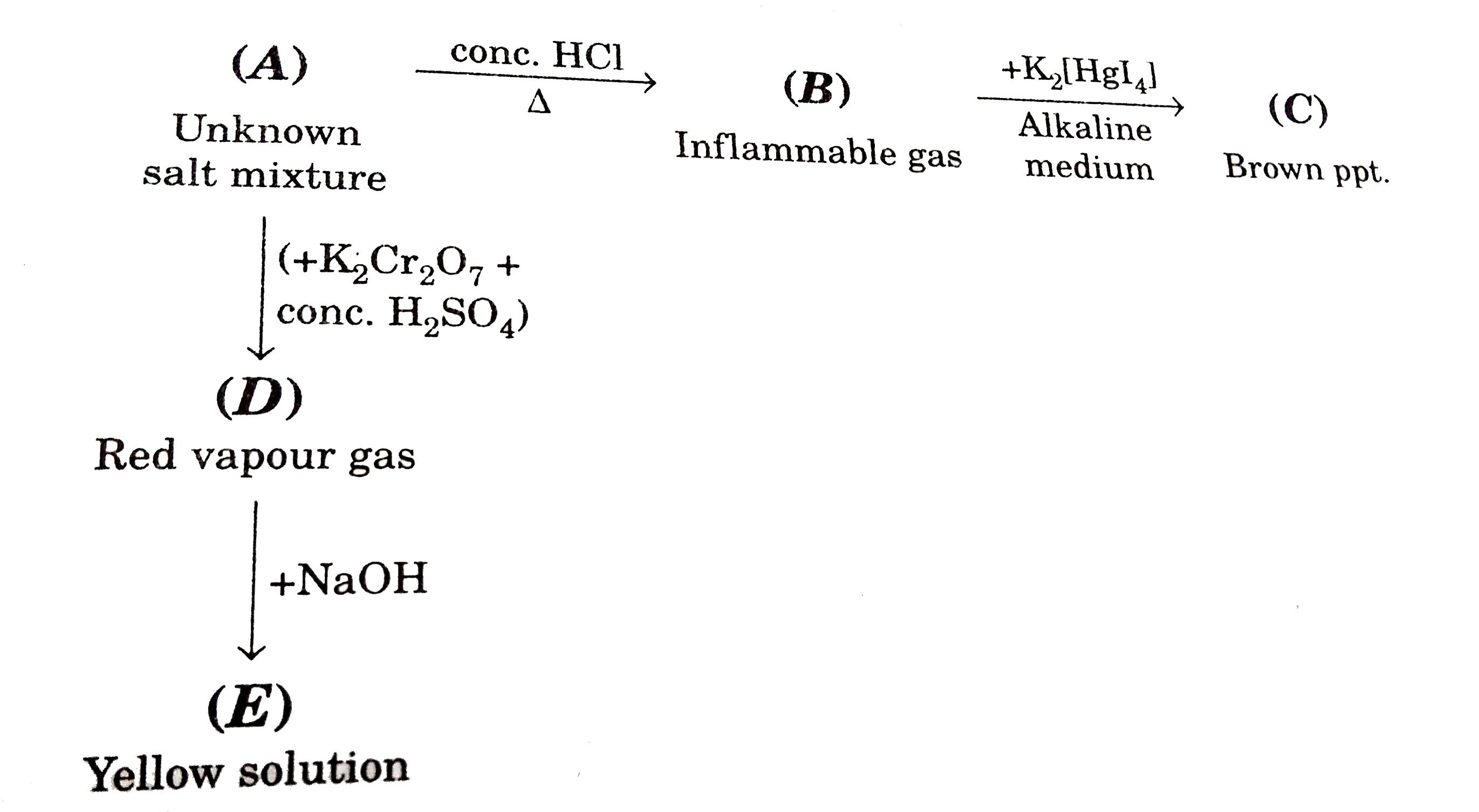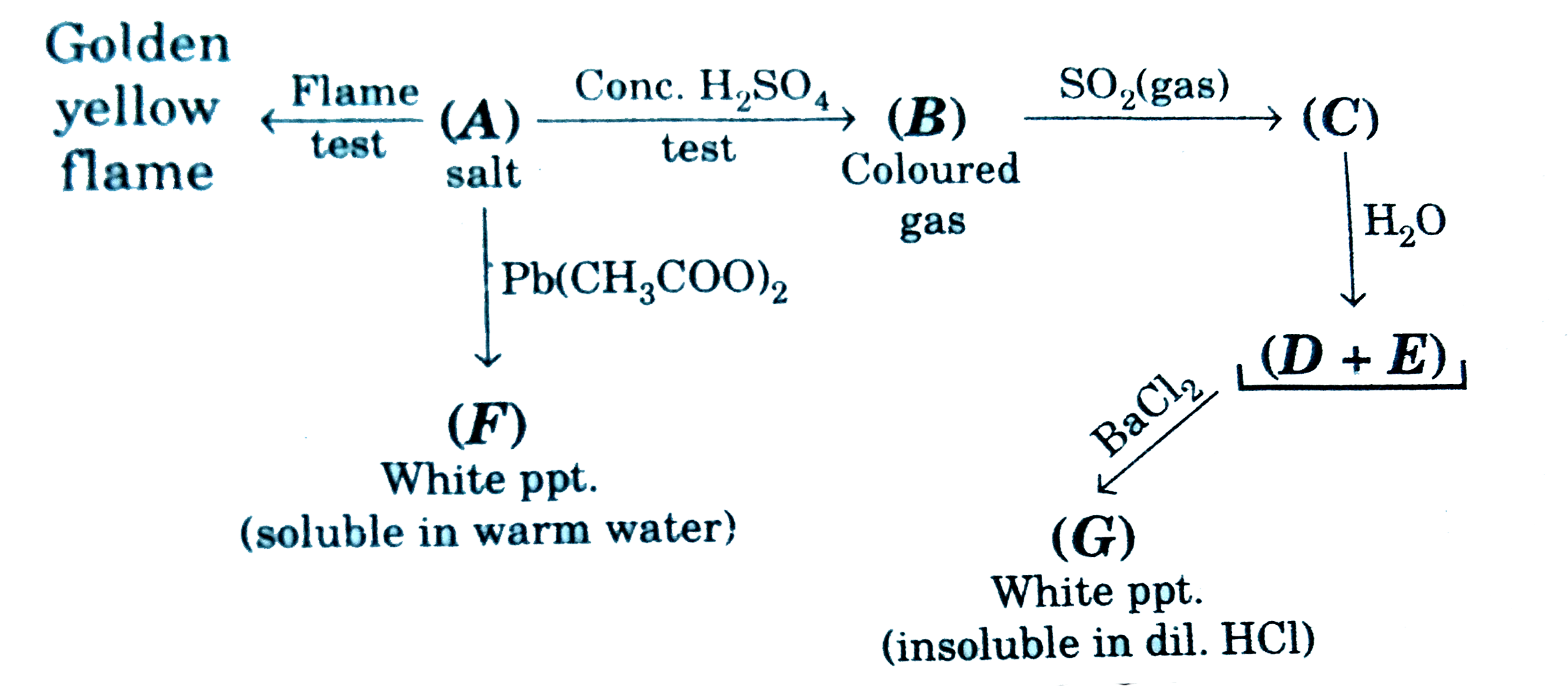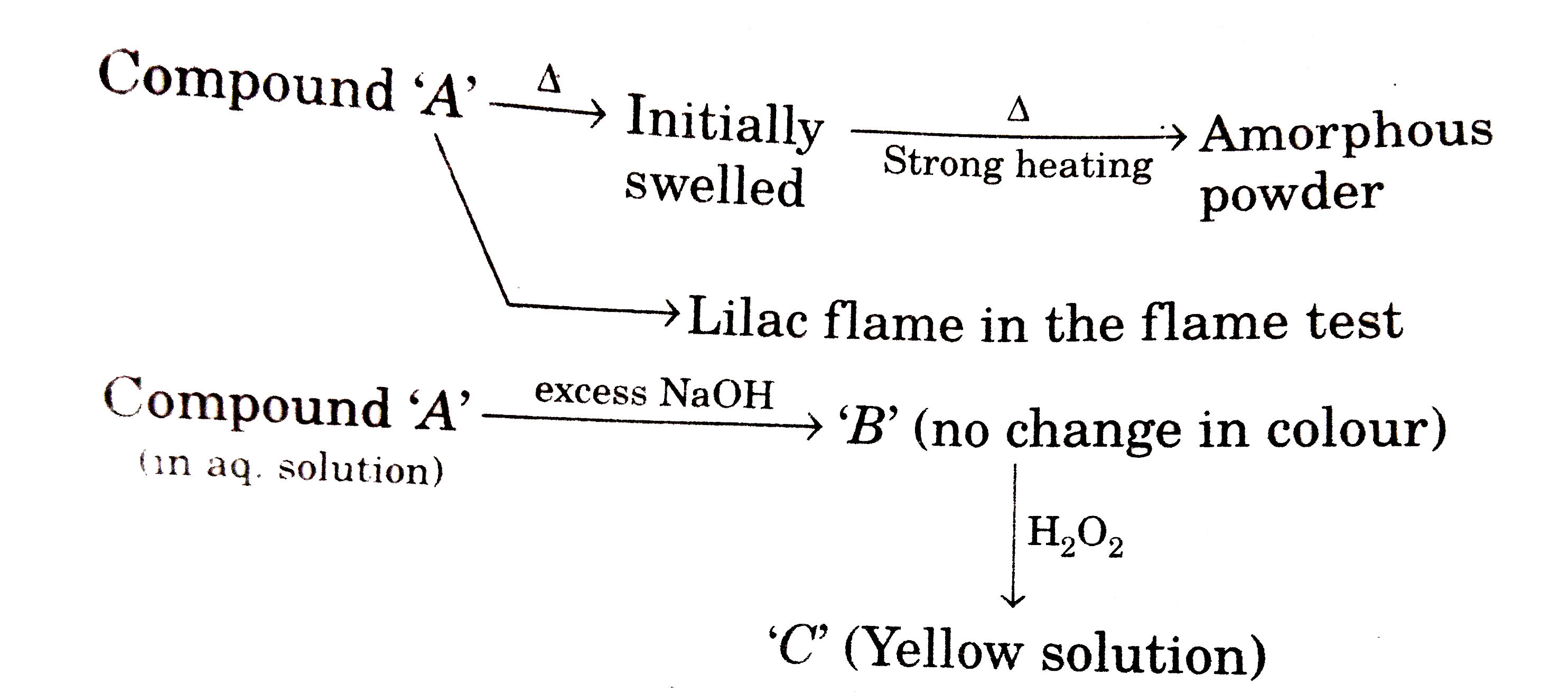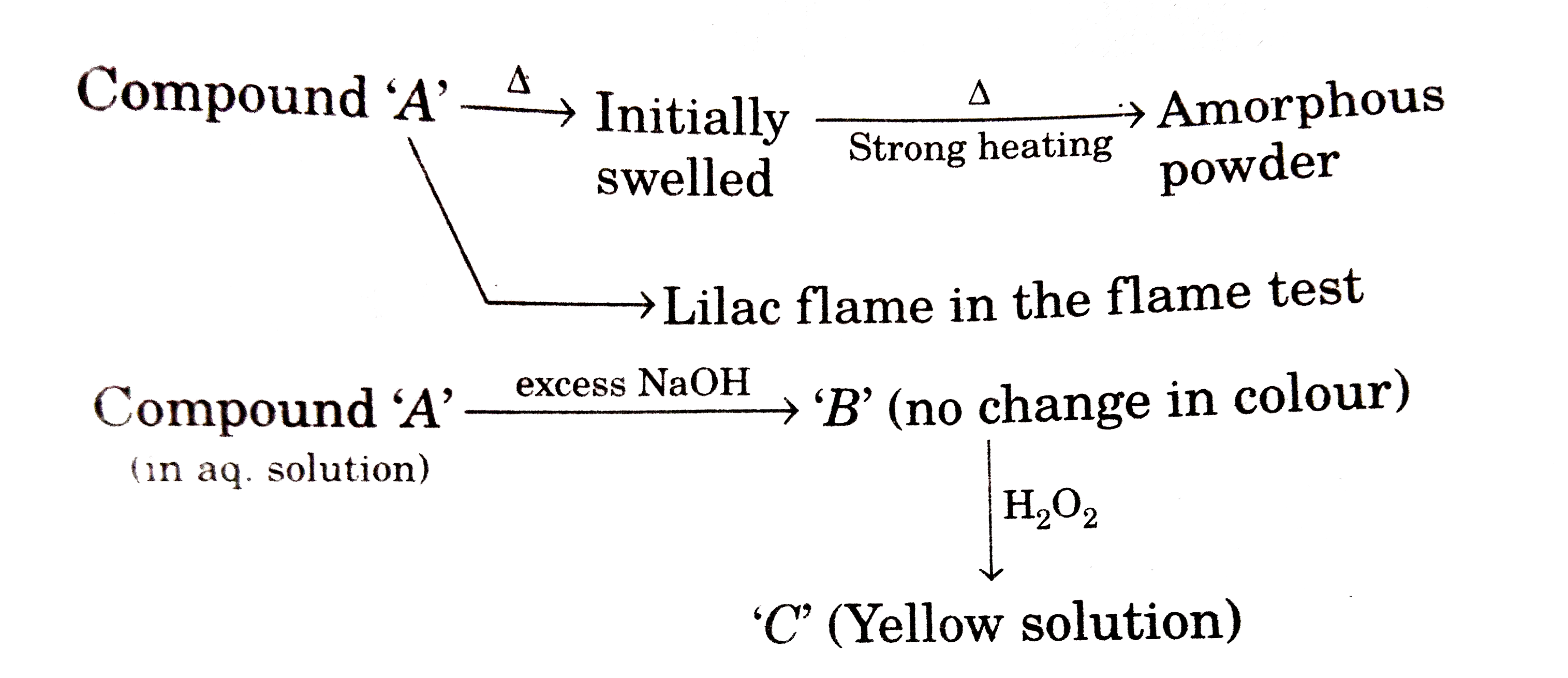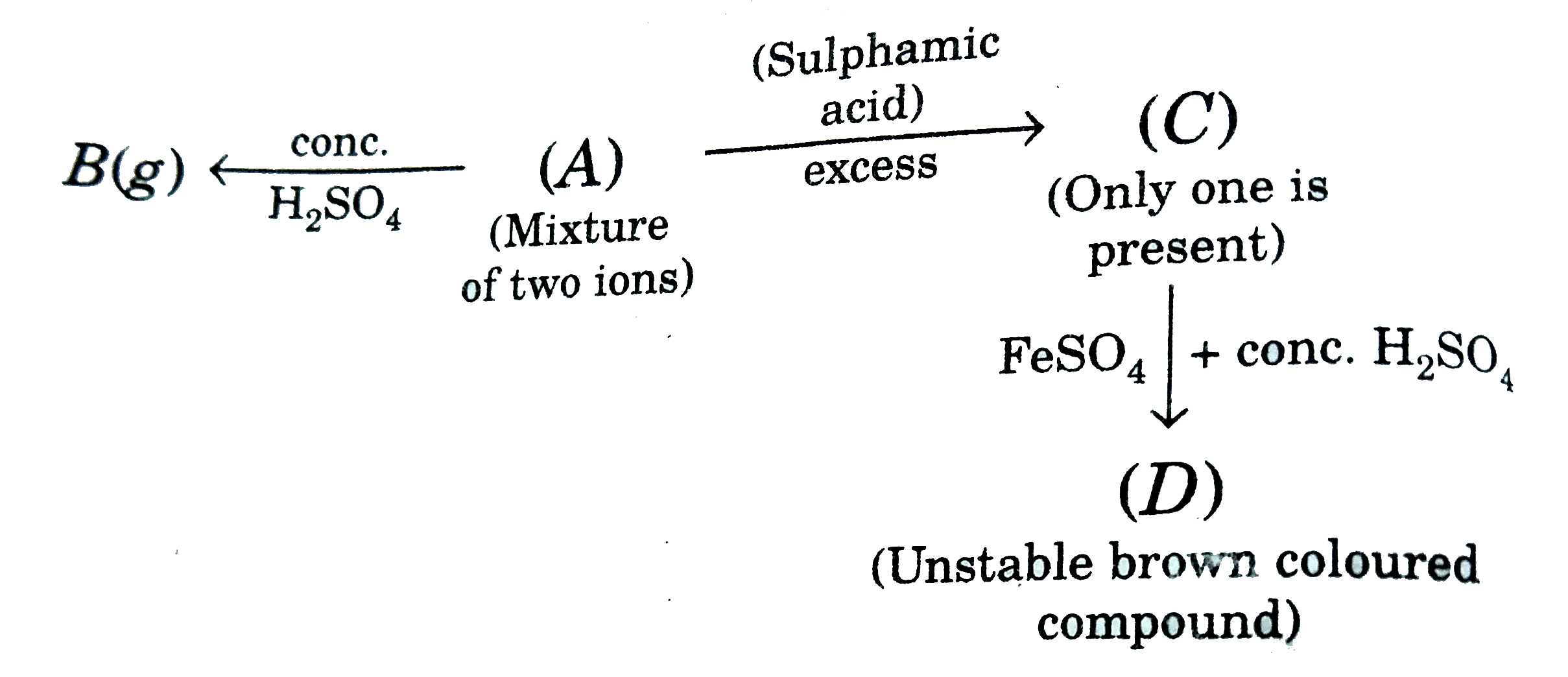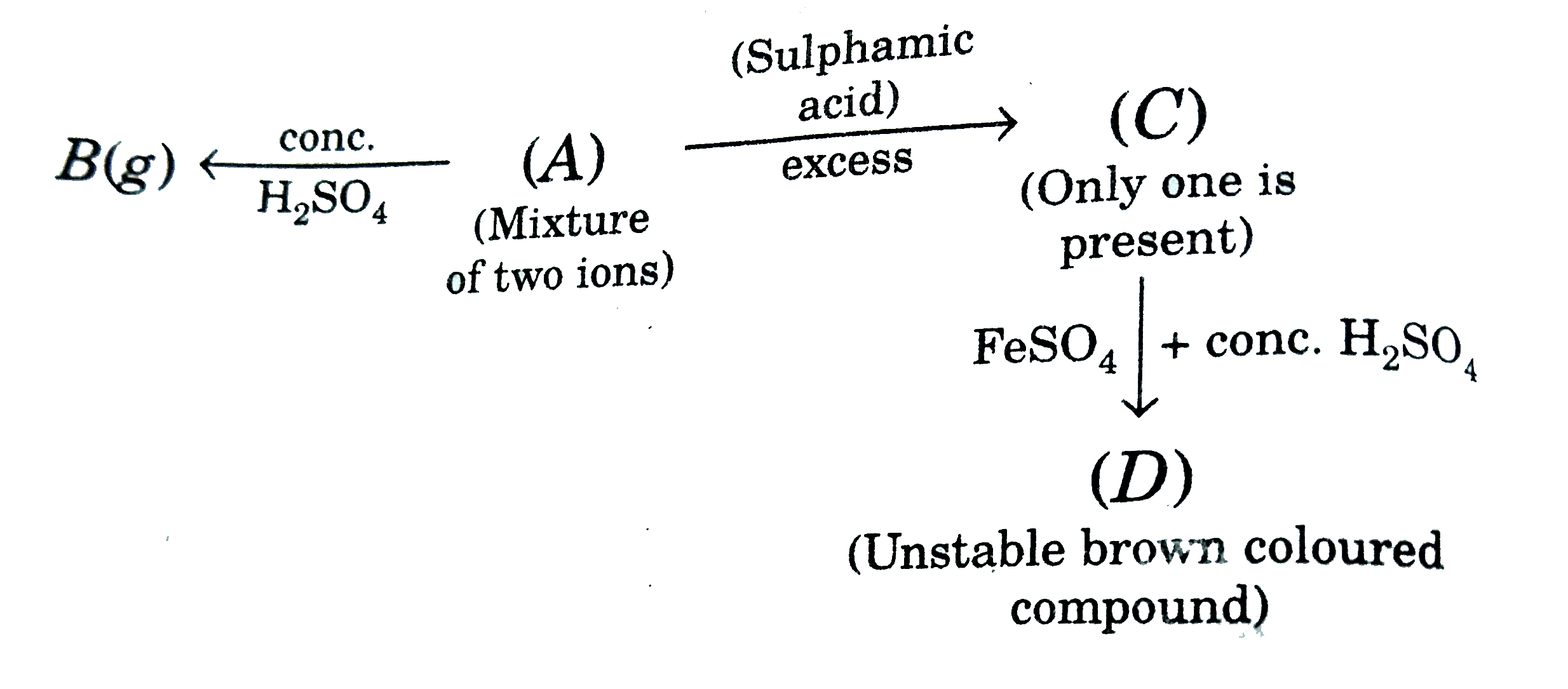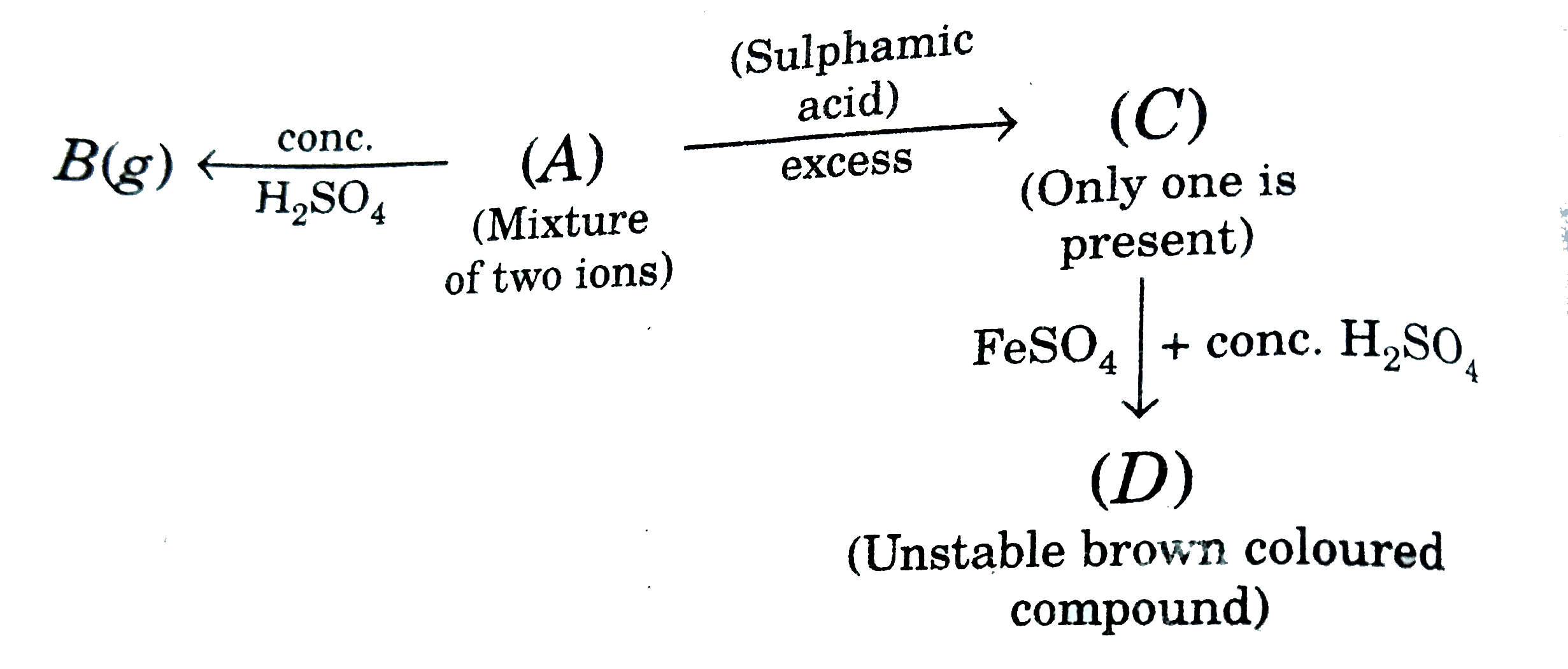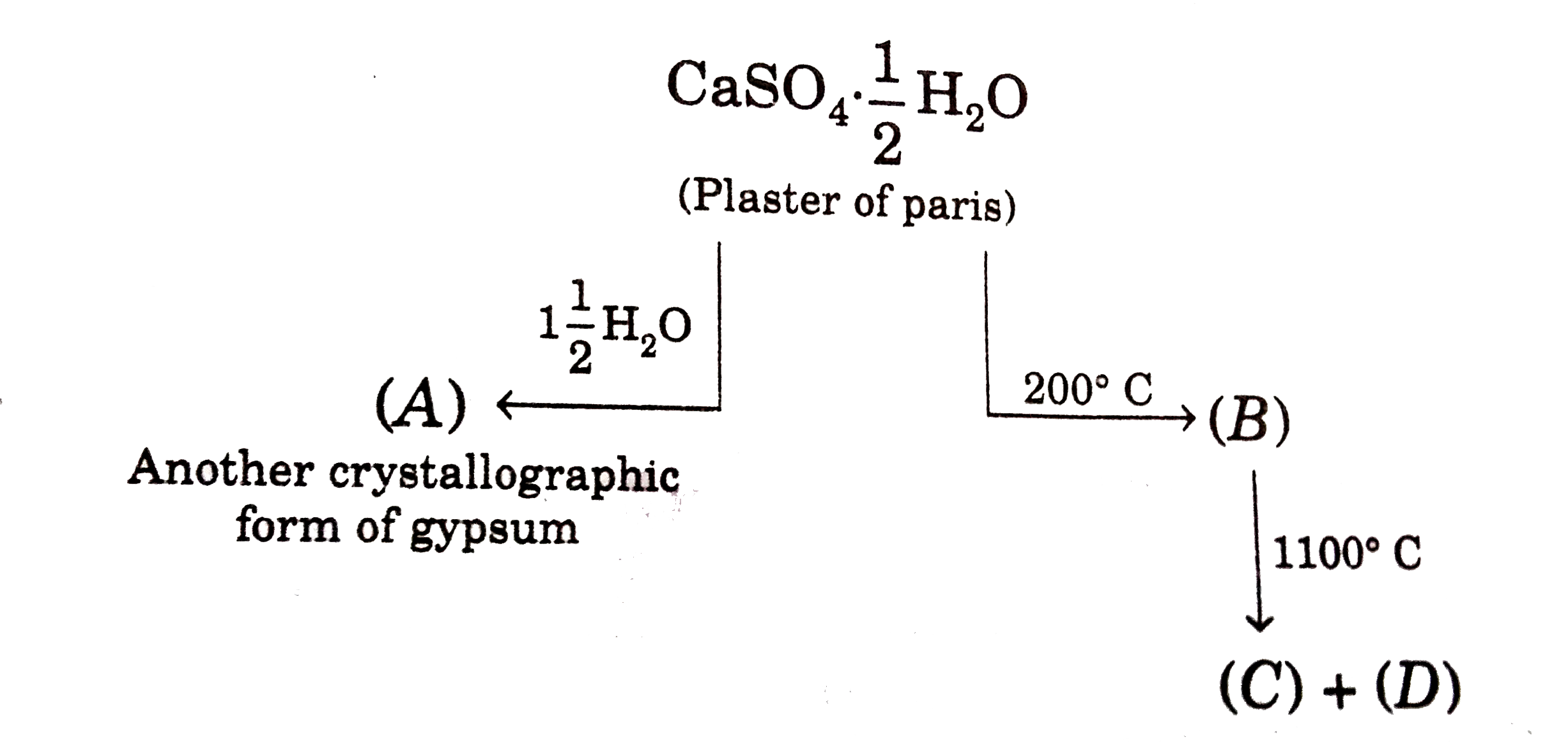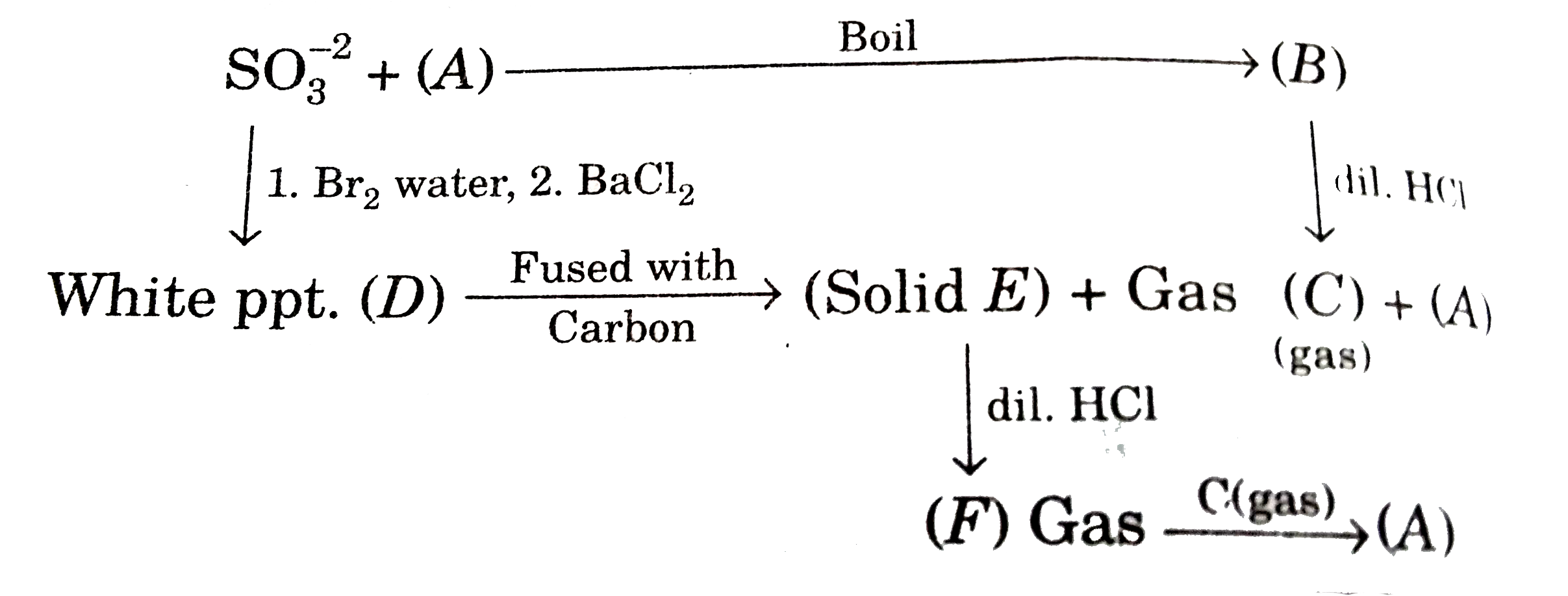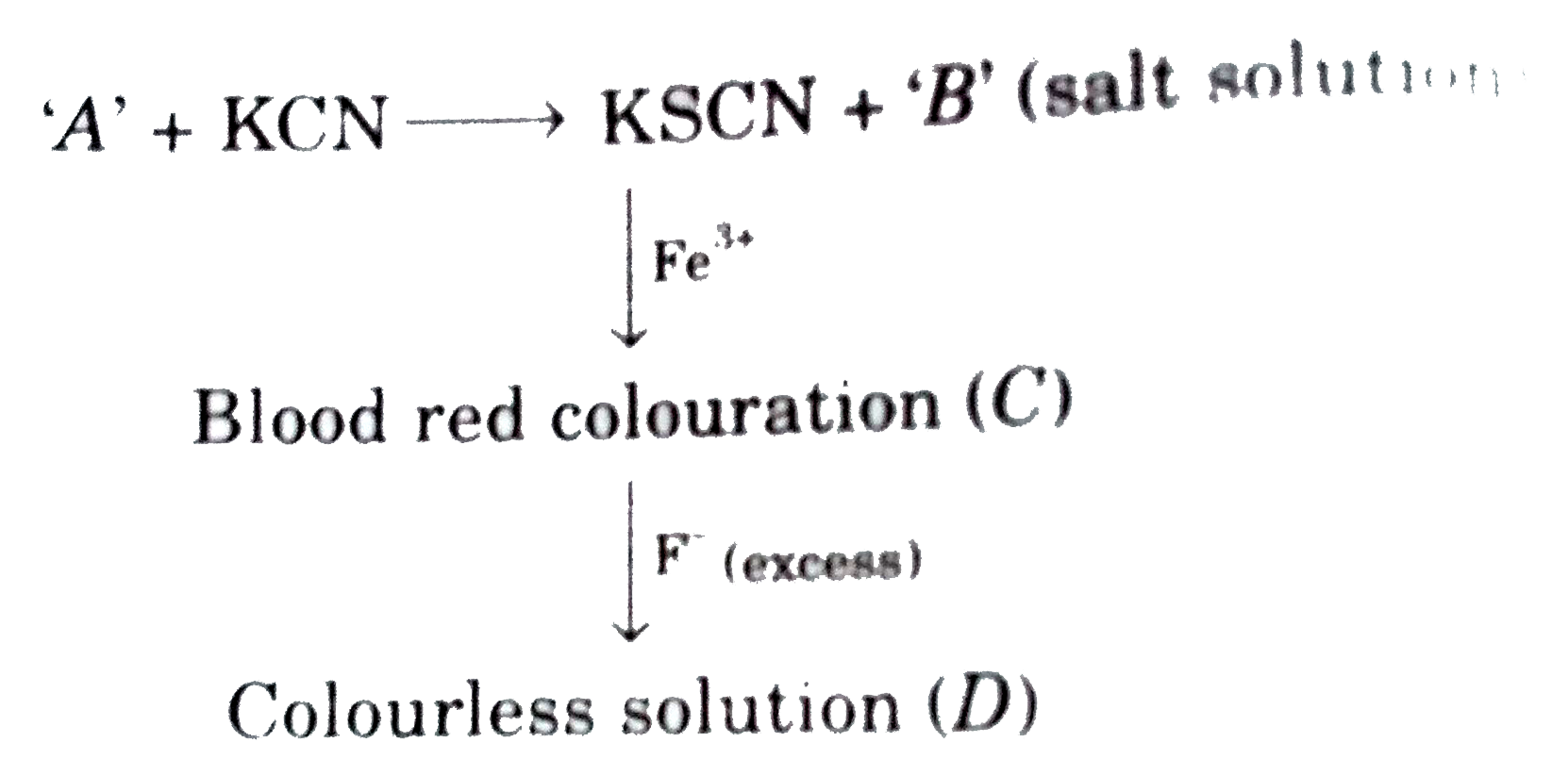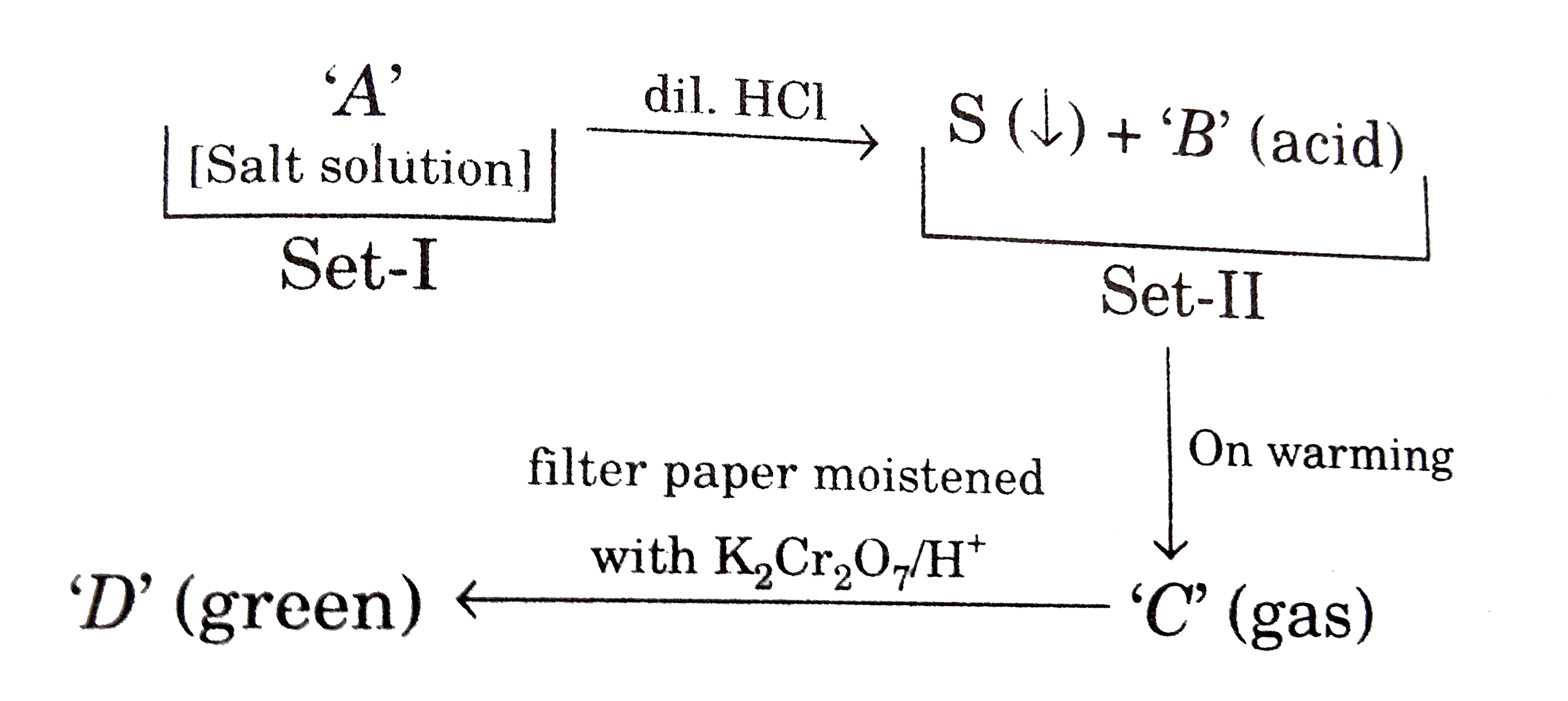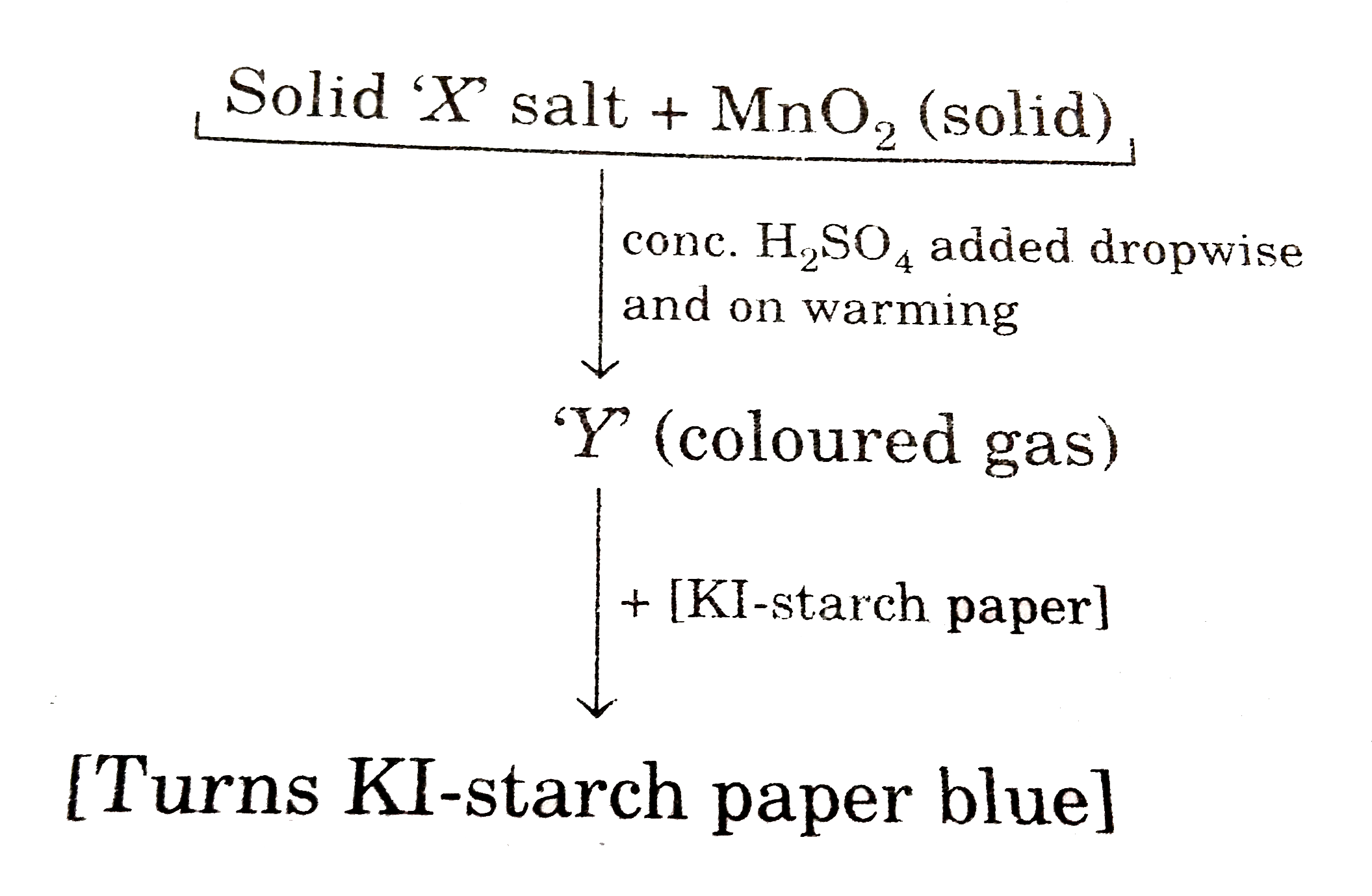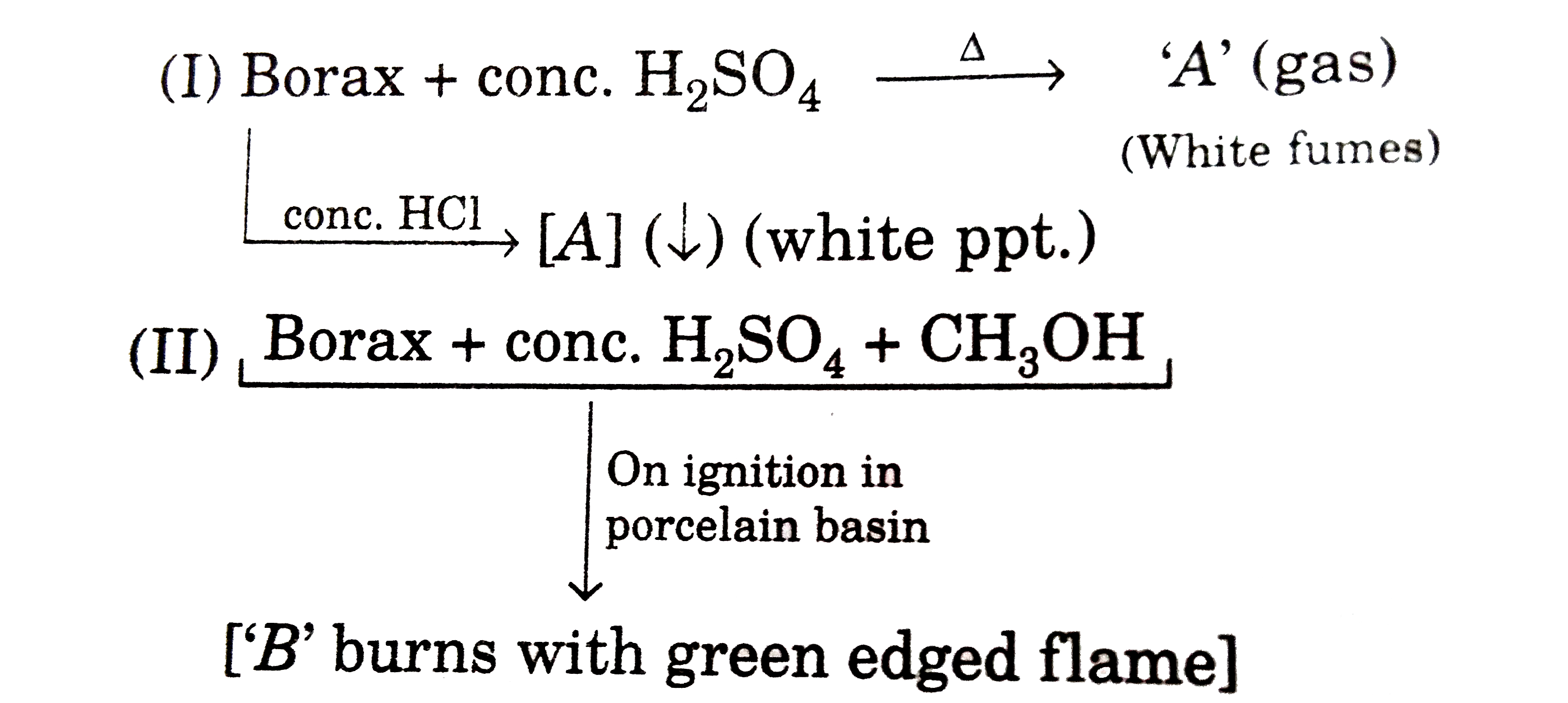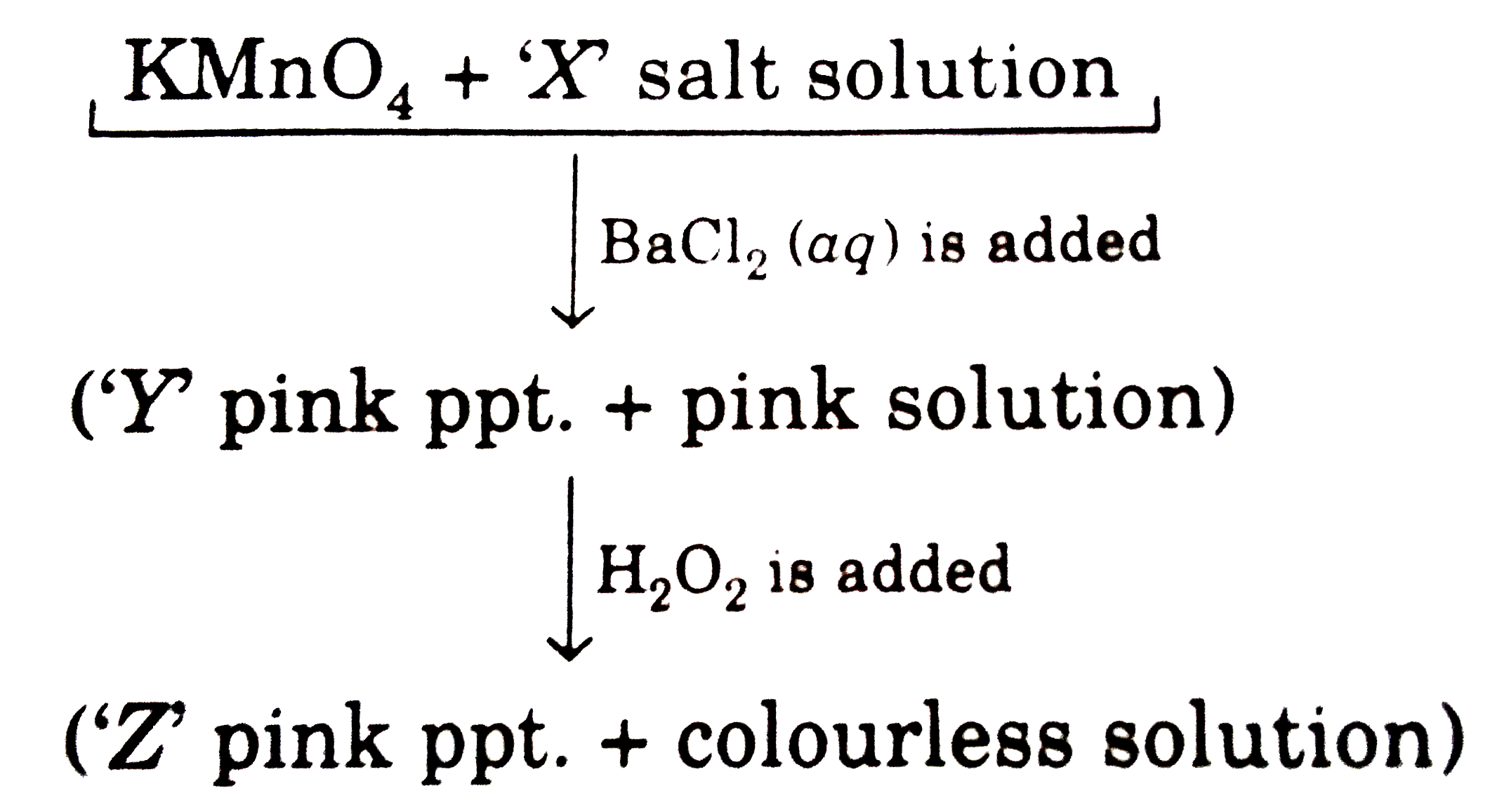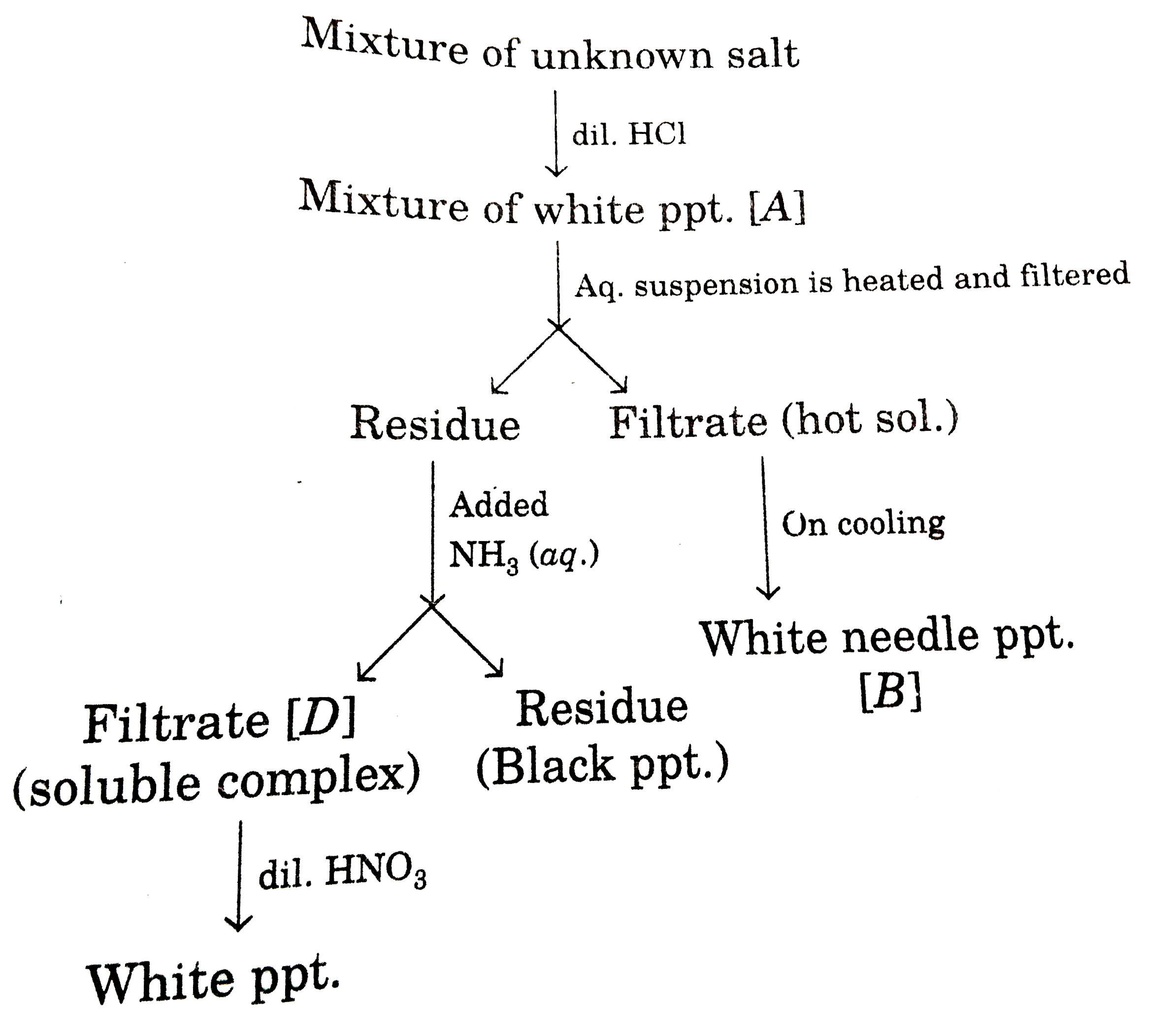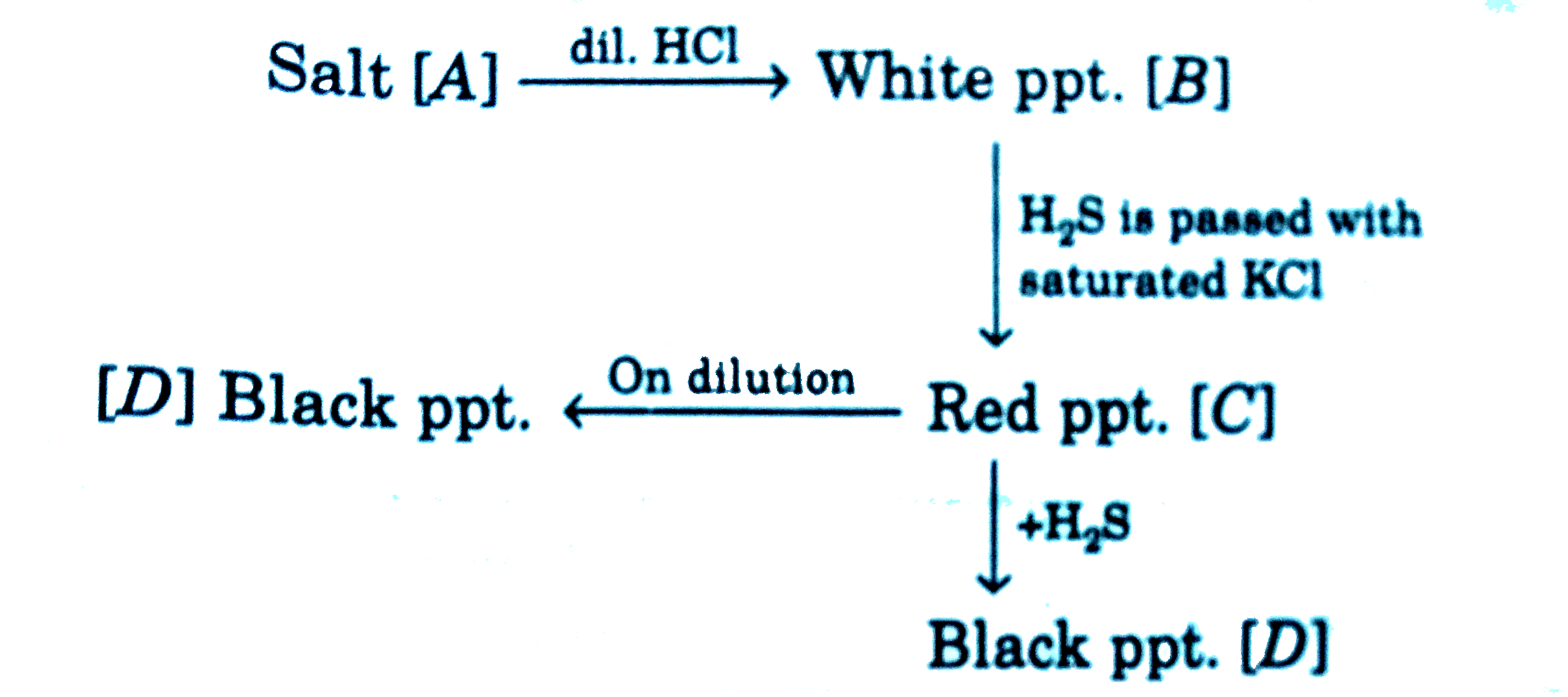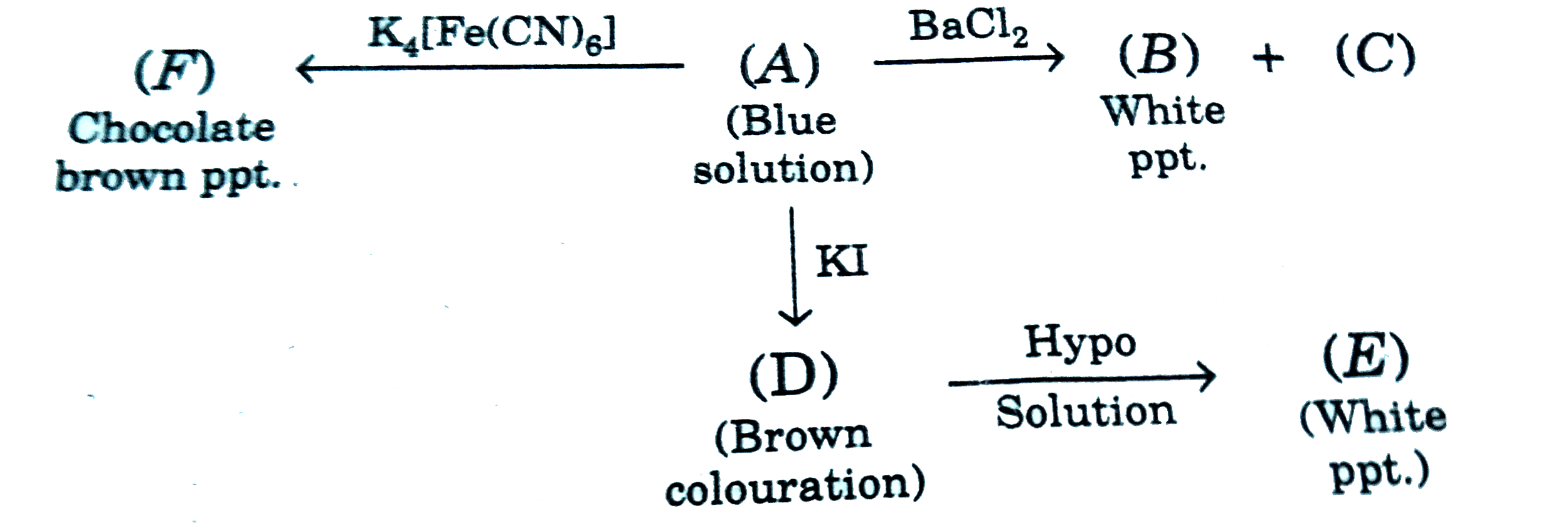Comprehension from GRB CHEMISTRY Chapter 13 SALT ANALYSIS for Class 11
| Class 11 | CHEMISTRY |
| Chapter | SALT ANALYSIS |
| GRB CHEMISTRY | Comprehension |
| Medium | English |
| Academic Year | 2023-2024 |
Question 1
NH4CI+Na2HPO4+4Z→A(sparingly soluble salt)+NaCIAΔ−−→A'+4Z
A'Δ−−−→HighTX+Y↑⏐ ⏐ ⏐⏐+Z
Compound (Z) is a neutral oxide and turns anhydrous CuSO4 blue. Gas (Y) is a basic gas which can also be obtained by treating ammonium sulphate with lime water. sequences mentioned above involve balanced reactions.
Which of the following reactions would produce gas Y? View SolutionQuestion 2
NH4CI+Na2HPO4+4Z→A(sparingly soluble salt)+NaCIAΔ−−→A'+4Z
A'Δ−−−→HighTX+Y↑⏐ ⏐ ⏐⏐+Z
Compound (Z) is a neutral oxide and turns anhydrous CuSO4 blue. Gas (Y) is a basic gas which can also be obtained by treating ammonium sulphate with lime water. sequences mentioned above involve balanced reactions.
Formula of (A) is: View SolutionQuestion 3
Salt (W) gives golden yellow colouration in Bunsen flame. When (W) is oxidised by acidified K2Cr2O7, a colourless gas (X) is evolved which turns lime water milky and the milkiness disappears on passing excess of gas (X). However gas (X) does not decolourise pink solution of acidified KMnO4. when aqueous solution of salt (W) is added slowly to hydrated MnO2, red coloured solution is obtained due to formation of soluble complex (Y) along with evolution of gas (X).
The red coloured complex (Y) is:View SolutionQuestion 4
Salt (W) gives golden yellow colouration in Bunsen flame. When (W) is oxidised by acidified K2Cr2O7, a colourless gas (X) is evolved which turns lime water milky and the milkiness disappears on passing excess of gas (X). However gas (X) does not decolourise pink solution of acidified KMnO4. when aqueous solution of salt (W) is added slowly to hydrated MnO2, red coloured solution is obtained due to formation of soluble complex (Y) along with evolution of gas (X).
The salt (W) is:View SolutionQuestion 5
Two salts A and B both give white ppt. with BaCI2, (insoluble in conc. HCI and conc. HNO3) and brown ppt. with alkaline Nessler's reagent. Salt A gives blue colour with reagent X. Reagent X on oxidation gives reagent Y. The reagent Y gives blue colour with salt B. (X and Y are potassium contaning reagents.)
The reagent X on reaction with conc. H2SO4 gives gas.View SolutionQuestion 6
Two salts A and B both give white ppt. with BaCI2, (insoluble in conc. HCI and conc. HNO3) and brown ppt. with alkaline Nessler's reagent. Salt A gives blue colour with reagent X. Reagent X on oxidation gives reagent Y. The reagent Y gives blue colour with salt B. (X and Y are potassium contaning reagents.)
What will be the oxidation state of the red-brown coloured residue obtain by thermal decomposition of salt B?View SolutionQuestion 7
Salt is a mixed form of acidic and basic radical. The confirmatory test of basic and acidic radicals by using chemical reagent is called qualitative analysis. Precipitation reaction is used for the confirmatory test of radicals.
Which of the following iodide has scarlet red colour? View SolutionQuestion 10
(a) A powdered substance (A) on treatment with fusion mixture gives a green coloured compound (B).
(b) The solution of (B) on acidification with hot dilute H2SO4 gives a pink coloured compound (C).
(c) The aqueous solution of (A) on treatement with excess of NaOH and bromine water gives a compound (D).
(d) A solution of (D) in conc. HNO3 with lead dioxide at boiling temperature produces a compound (E), which has of the same colour as that of (C).
(e) A solution of (A) in dilute HCI on treatment with a solution of barium chloride gave a white precipitate of compound (F), which was insoluble in conc. HNO3 and conc. HCI.
Compound (C) and (E) are coloured due to:View SolutionQuestion 11
(a) A powdered substance (A) on treatment with fusion mixture gives a green coloured compound (B).
(b) The solution of (B) on acidification with hot dilute H2SO4 gives a pink coloured compound (C).
(c) The aqueous solution of (A) on treatement with excess of NaOH and bromine water gives a compound (D).
(d) A solution of (D) in conc. HNO3 with lead dioxide at boiling temperature produces a compound (E), which has of the same colour as that of (C).
(e) A solution of (A) in dilute HCI on treatment with a solution of barium chloride gave a white precipitate of compound (F), which was insoluble in conc. HNO3 and conc. HCI.
What is (D)?View SolutionQuestion 15
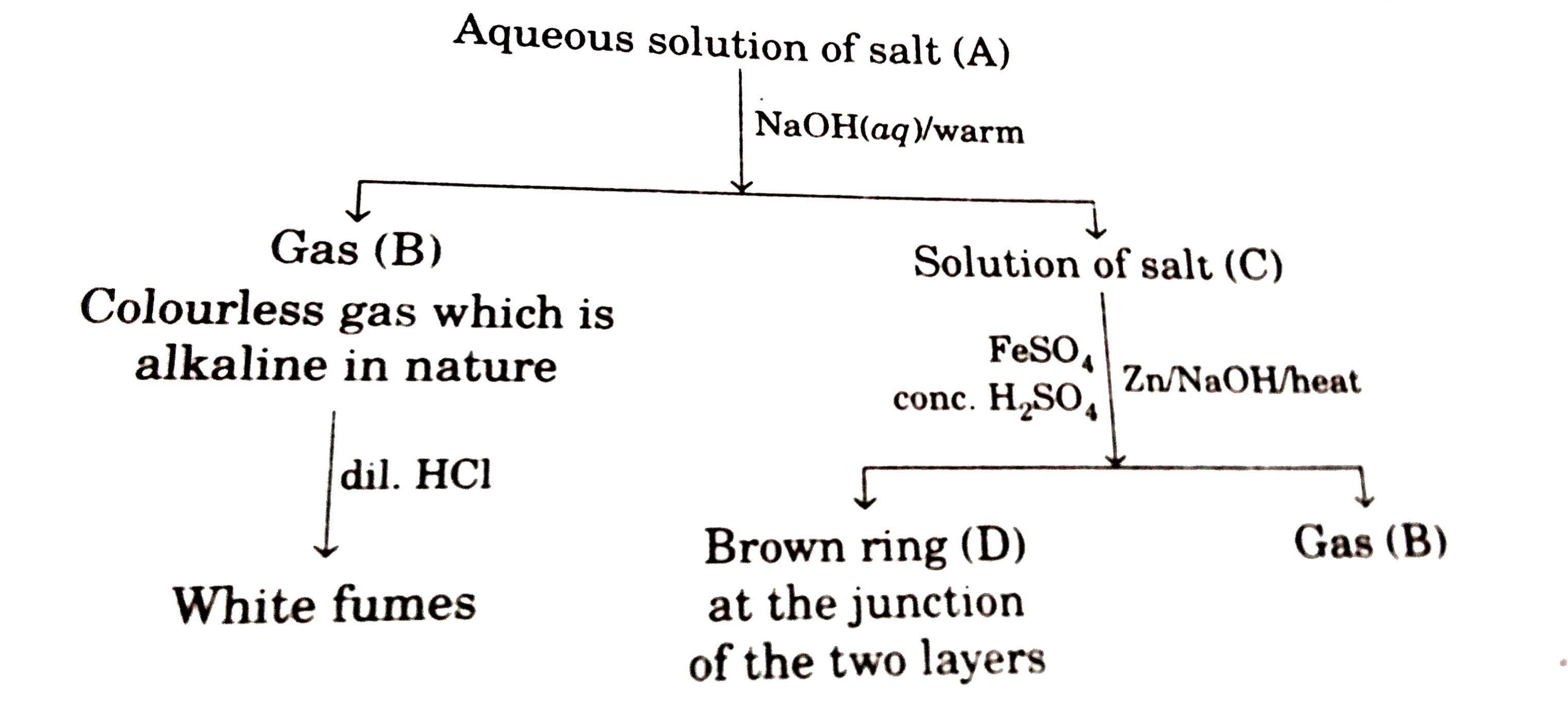
Salt (A) on heating gives a colourless neutral gas which supports combustion. From the aforesaid, flow diagram, answer the following questions.
The basic radical of salt (A) and gas (B) both gives brown precipitate with Nessler's reagent. the composition of the brown precipitate is:View SolutionQuestion 17
A chemist opened a couborad and found four bottles contaning water solutions, each of which had lost its label. Bottles 1,2,3 contained colourless solutions, while bottle 4 contained a blue solution. The lables from the bottles were lying scattered on the floor of the cupboard. They were:
Copper (II) sulphate," "Hydrochloric acid
Lead nitrate," "Sodium carbonate
By mixing samples of the contents of the bottles, in pairs the chemist made the following observations:
Bottle +1 Bottle2→White precipitate is formedBottle 1+ Bottle3→White precipitate is formedBottle 1+ Bottle4→White precipitate is formedBottle2+ Bottle3→Colourless and odourless gas is evolvedBottle 2+ Buttel4→No visivle reaction is observedBottle 3+ Bottle4→Blue precipitate is formed
With the help of the above observations answer the following questions.
Which of the following statements is correct for salts contained in bottle 1 and 4?View SolutionQuestion 18
A chemist opened a couborad and found four bottles contaning water solutions, each of which had lost its label. Bottles 1,2,3 contained colourless solutions, while bottle 4 contained a blue solution. The lables from the bottles were lying scattered on the floor of the cupboard. They were:
Copper (II) sulphate," "Hydrochloric acid
Lead nitrate," "Sodium carbonate
By mixing samples of the contents of the bottles, in pairs the chemist made the following observations:
Bottle +1 Bottle2→White precipitate is formedBottle 1+ Bottle3→White precipitate is formedBottle 1+ Bottle4→White precipitate is formedBottle2+ Bottle3→Colourless and odourless gas is evolvedBottle 2+ Buttel4→No visivle reaction is observedBottle 3+ Bottle4→Blue precipitate is formed
With the help of the above observations answer the following questions.
Which one of the following bottles develops deep blue colour with aqueous ammonia? View SolutionQuestion 19
A chemist opened a couborad and found four bottles contaning water solutions, each of which had lost its label. Bottles 1,2,3 contained colourless solutions, while bottle 4 contained a blue solution. The lables from the bottles were lying scattered on the floor of the cupboard. They were:
Copper (II) sulphate," "Hydrochloric acid
Lead nitrate," "Sodium carbonate
By mixing samples of the contents of the bottles, in pairs the chemist made the following observations:
Bottle +1 Bottle2→White precipitate is formedBottle 1+ Bottle3→White precipitate is formedBottle 1+ Bottle4→White precipitate is formedBottle2+ Bottle3→Colourless and odourless gas is evolvedBottle 2+ Buttel4→No visivle reaction is observedBottle 3+ Bottle4→Blue precipitate is formed
With the help of the above observations answer the following questions.
Which of the following bottle will give precipitate with bottle 1?View SolutionQuestion 20

Moreover, the salt (A) on heating with solid K2Cr2O7 and concentrated H2SO4 produces deep red vapors which dissolve in sodium hydroxide solution forming a yellow solution. This yellow solution gives yellow precipitate with Ba(NO3)2 solution. On the basis of teh aforesaid characteristic informations answer the following questions:
The black precipitate F on heating with water produces: View SolutionQuestion 21
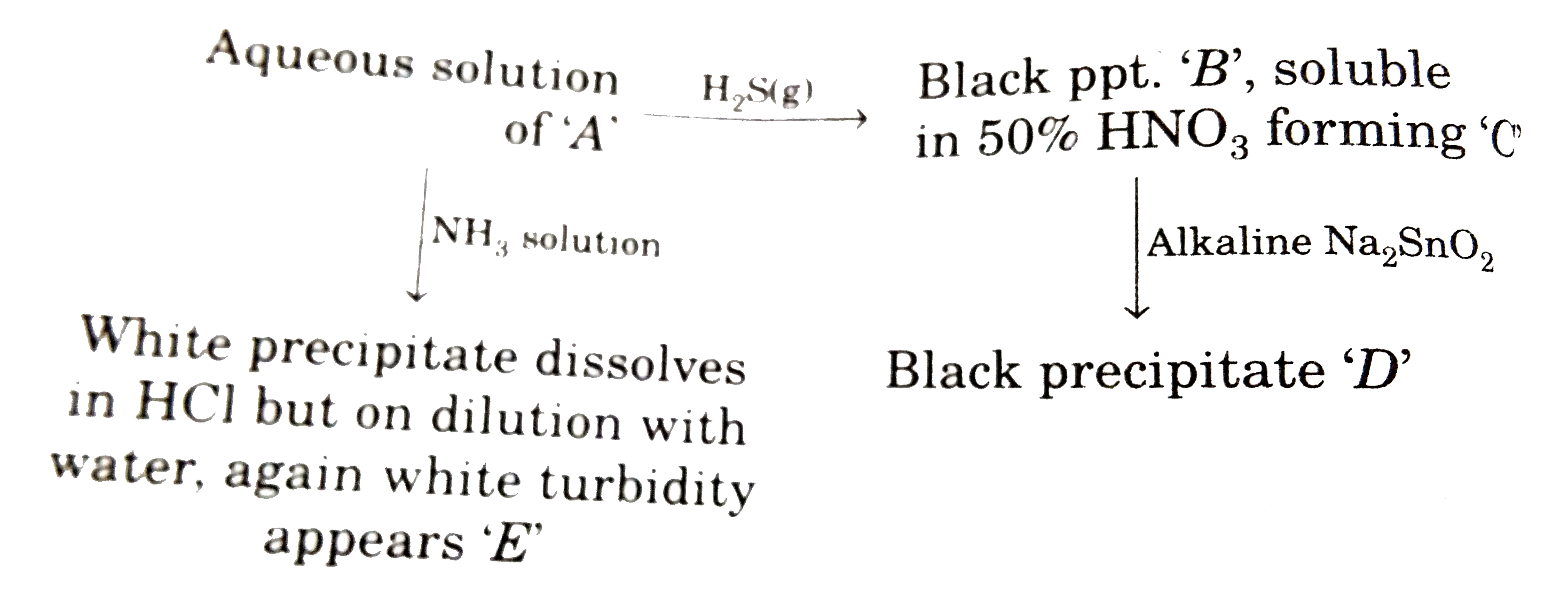
Moreover, the salt (A) on heating with solid K2Cr2O7 and concentrated H2SO4 produces deep red vapors which dissolve in sodium hydroxide solution forming a yellow solution. This yellow solution gives yellow precipitate with Ba(NO3)2 solution. On the basis of teh aforesaid characteristic informations answer the following questions:
Which of the following statements is incorrect? View SolutionQuestion 22
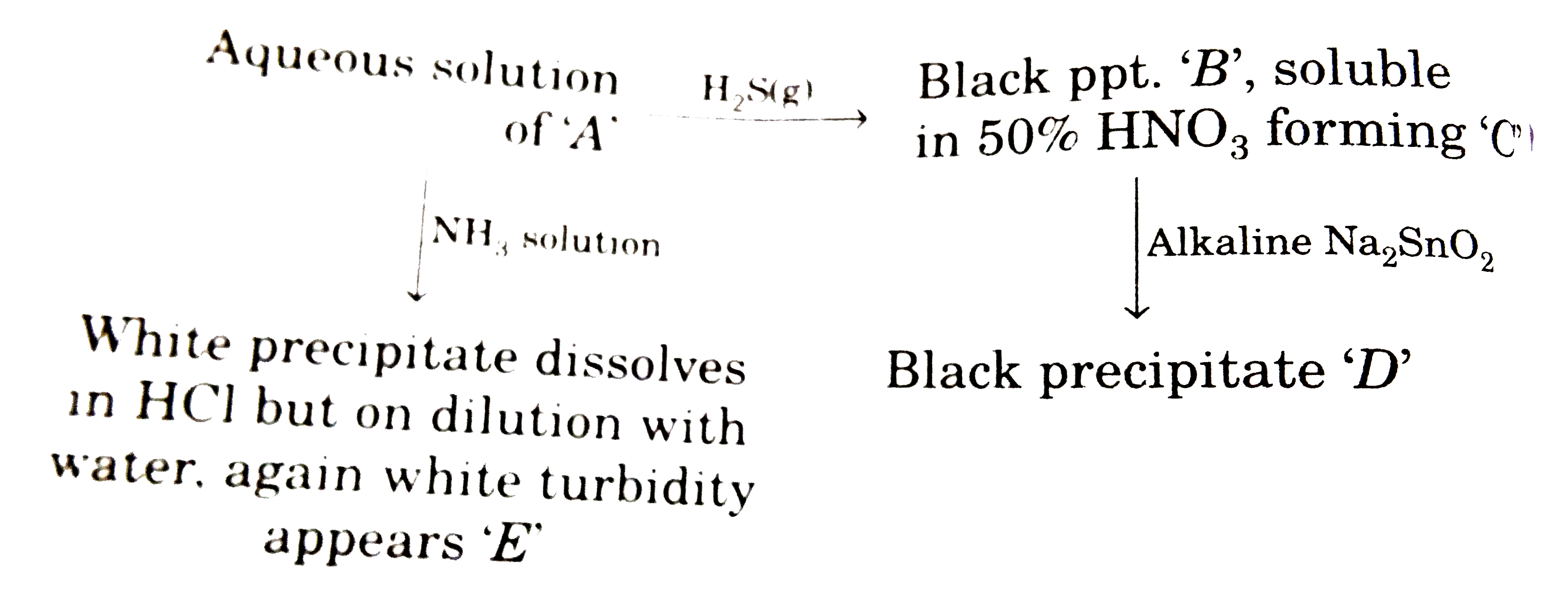
Moreover, the salt (A) on heating with solid K2Cr2O7 and concentrated H2SO4 produces deep red vapors which dissolve in sodium hydroxide solution forming a yellow solution. This yellow solution gives yellow precipitate with Ba(NO3)2 solution. On the basis of teh aforesaid characteristic informations answer the following questions:
Select the correct statement. View SolutionQuestion 25
p-Amino-N,N-dimethylaniline is added to a strongly acidic solution of X. the resulting solution is treated with a few drops of aqueous solution of Y to yield blue colouration due to the formation of methylene blue. Treatment of the aqueous solution of Y with the reagent potassium hexacyanoferrate (II) leads to the formation of an intense blue precipitate. The precipitate dissolves on excess addition of the reagent. Similarly, treatment of the solution of Y with the solution of potassium hexacyanoferrate (III) leads to a brown colouration due to the formation of Z.
The compound Y is: View SolutionQuestion 26
p-Amino-N,N-dimethylaniline is added to a strongly acidic solution of X. the resulting solution is treated with a few drops of aqueous solution of Y to yield blue colouration due to the formation of methylene blue. Treatment of the aqueous solution of Y with the reagent potassium hexacyanoferrate (II) leads to the formation of an intense blue precipitate. The precipitate dissolves on excess addition of the reagent. Similarly, treatment of the solution of Y with the solution of potassium hexacyanoferrate (III) leads to a brown colouration due to the formation of Z.
The compound Z is:View SolutionQuestion 29
Fe+3 ions in an aqueous solution gives deep red colouration with both sodium acetate (in excess) and ammonium thiocyanate (slightly acidic). The deep red colouration obtained with ammonium thiocyanate gets decolourised on addition of a solution containing F− ions.
Which one of the following statements is false with respect to deep red colouration produced with NH4SCN? View SolutionQuestion 30
Fe+3 ions in an aqueous solution gives deep red colouration with both sodium acetate (in excess) and ammonium thiocyanate (slightly acidic). The deep red colouration obtained with ammonium thiocyanate gets decolourised on addition of a solution containing F− ions.
Select the correct statement with respect to the compound formed as a result of the bleaching of deep red colouration of Fe(SCN)3 by a solution containing F− ions. View SolutionQuestion 31
Fe+3 ions in an aqueous solution gives deep red colouration with both sodium acetate (in excess) and ammonium thiocyanate (slightly acidic). The deep red colouration obtained with ammonium thiocyanate gets decolourised on addition of a solution containing F− ions.
Excess of sodium acetate is added in the reaction with Fe3+ ions because: View SolutionQuestion 32
Fe+3 ions in an aqueous solution gives deep red colouration with both sodium acetate (in excess) and ammonium thiocyanate (slightly acidic). The deep red colouration obtained with ammonium thiocyanate gets decolourised on addition of a solution containing F− ions.
What happens when deep red coloured solution of is diluted with water and then boiled? View SolutionQuestion 33
The presence of Hg2+ ions is detected as its sulphide in group IIA of qualitative analysis. The black HgS is one of the least soluble precipitate known (Ksp=4×10−54). Aqua regia and sodium sulphide (2M) dissolve the black precipitate. potassium iodide when added slowly to the solution contaning Hg2+ ions, a red precipitate is formed which dissolves in excess KI to form a colourless soluble complex. when NH4CI solution is added to the above colourless soluble complex containing some NaOH, a brown precipitate is formed. when to a warm alkaline aqueous solution of Hg(NO3)2 a solution a ammonium chloride is added, a white precipitate is obtained.
The brown precipitate formed is due to the formation of: View SolutionQuestion 34
The presence of Hg2+ ions is detected as its sulphide in group IIA of qualitative analysis. The black HgS is one of the least soluble precipitate known (Ksp=4×10−54). Aqua regia and sodium sulphide (2M) dissolve the black precipitate. potassium iodide when added slowly to the solution contaning Hg2+ ions, a red precipitate is formed which dissolves in excess KI to form a colourless soluble complex. when NH4CI solution is added to the above colourless soluble complex containing some NaOH, a brown precipitate is formed. when to a warm alkaline aqueous solution of Hg(NO3)2 a solution a ammonium chloride is added, a white precipitate is obtained.
Hg2+ ions give deep blue crystalline precipitate with:View SolutionQuestion 35
The presence of Hg2+ ions is detected as its sulphide in group IIA of qualitative analysis. The black HgS is one of the least soluble precipitate known (Ksp=4×10−54). Aqua regia and sodium sulphide (2M) dissolve the black precipitate. potassium iodide when added slowly to the solution contaning Hg2+ ions, a red precipitate is formed which dissolves in excess KI to form a colourless soluble complex. when NH4CI solution is added to the above colourless soluble complex containing some NaOH, a brown precipitate is formed. when to a warm alkaline aqueous solution of Hg(NO3)2 a solution a ammonium chloride is added, a white precipitate is obtained.
The white precipitate formed is due to the formation of:View SolutionQuestion 36
The presence of Hg2+ ions is detected as its sulphide in group IIA of qualitative analysis. The black HgS is one of the least soluble precipitate known (Ksp=4×10−54). Aqua regia and sodium sulphide (2M) dissolve the black precipitate. potassium iodide when added slowly to the solution contaning Hg2+ ions, a red precipitate is formed which dissolves in excess KI to form a colourless soluble complex. when NH4CI solution is added to the above colourless soluble complex containing some NaOH, a brown precipitate is formed. when to a warm alkaline aqueous solution of Hg(NO3)2 a solution a ammonium chloride is added, a white precipitate is obtained.
Identify the incorrect statement with respect to Hg(II) salts. View SolutionQuestion 37
A white substance (A) reacts with dilute H2SO4 to produce a colourless gas (B) and a colourless solution (C). The reaction between (B) and acidified K2Cr2O7 solution produces a green solution and a slightly coloured precipitate (D). Addition of aqueous ammonia or sodium hydroxide to (C) produces first a precipitate, which dissolves in the excess of teh respective reagent to produce a clear solution in each case.
The metal cation of the white substance (A) is:View SolutionQuestion 38
A white substance (A) reacts with dilute H2SO4 to produce a colourless gas (B) and a colourless solution (C). The reaction between (B) and acidified K2Cr2O7 solution produces a green solution and a slightly coloured precipitate (D). Addition of aqueous ammonia or sodium hydroxide to (C) produces first a precipitate, which dissolves in the excess of teh respective reagent to produce a clear solution in each case.
Which of the following statement is correct? View SolutionQuestion 43
A coloured solution known to contain two metal ions of different groups, was treated with excess cold sodium hydroxide solution. When filtered a whitish solid, slowly changing to brown, was retained on the filter paper and a colourless solution collected as the filtrate. Drop wise adition of hydrochloric acid to the filtrate produced a white precipitate which dissolved in excess acid. Treatment of the residue from the filter paper with a strong oxidiser, PbO2 and concentrated HNO3 on boiling produced a reddish-violet (purple) solution.
Filtrate obtained after separation of white solid contains:View SolutionQuestion 44
A coloured solution known to contain two metal ions of different groups, was treated with excess cold sodium hydroxide solution. When filtered a whitish solid, slowly changing to brown, was retained on the filter paper and a colourless solution collected as the filtrate. Drop wise adition of hydrochloric acid to the filtrate produced a white precipitate which dissolved in excess acid. Treatment of the residue from the filter paper with a strong oxidiser, PbO2 and concentrated HNO3 on boiling produced a reddish-violet (purple) solution.
White solid changing to brown is due to formation of: View SolutionQuestion 45
A coloured solution known to contain two metal ions of different groups, was treated with excess cold sodium hydroxide solution. When filtered a whitish solid, slowly changing to brown, was retained on the filter paper and a colourless solution collected as the filtrate. Drop wise adition of hydrochloric acid to the filtrate produced a white precipitate which dissolved in excess acid. Treatment of the residue from the filter paper with a strong oxidiser, PbO2 and concentrated HNO3 on boiling produced a reddish-violet (purple) solution.
Reddish-violet solution obtained by oxidation is of: View SolutionQuestion 46
A coloured solution known to contain two metal ions of different groups, was treated with excess cold sodium hydroxide solution. When filtered a whitish solid, slowly changing to brown, was retained on the filter paper and a colourless solution collected as the filtrate. Drop wise adition of hydrochloric acid to the filtrate produced a white precipitate which dissolved in excess acid. Treatment of the residue from the filter paper with a strong oxidiser, PbO2 and concentrated HNO3 on boiling produced a reddish-violet (purple) solution.
Reddish-violet (purple) solution is decolourised by: View SolutionQuestion 47
A colourless mixture of two salts (A) and (B) excess is soluble in H2O. Separately (A) turns blue litmus red and (B) turns red litmus blue. (A) given white precipitate with (B), which dissolves in excess of (B) forming (C). (A) when placed in moist air gives fumes and can form dimer. (A) gives white precipitate with NH4CI and NH4OH soluble in (B).(A) also gives white precipitate with AgNO3 soluble in NH4OH.
(A) remains soluble in H2O in presence of excess of (B). It is due to formation of : View SolutionQuestion 48
A colourless mixture of two salts (A) and (B) excess is soluble in H2O. Separately (A) turns blue litmus red and (B) turns red litmus blue. (A) given white precipitate with (B), which dissolves in excess of (B) forming (C). (A) when placed in moist air gives fumes and can form dimer. (A) gives white precipitate with NH4CI and NH4OH soluble in (B).(A) also gives white precipitate with AgNO3 soluble in NH4OH.
(A) turns blue litmus red. it is due to acidic solution because of: View SolutionQuestion 49
A colourless mixture of two salts (A) and (B) excess is soluble in H2O. Separately (A) turns blue litmus red and (B) turns red litmus blue. (A) given white precipitate with (B), which dissolves in excess of (B) forming (C). (A) when placed in moist air gives fumes and can form dimer. (A) gives white precipitate with NH4CI and NH4OH soluble in (B).(A) also gives white precipitate with AgNO3 soluble in NH4OH.
White fumes are formed in moist air. It is due to formation of:View SolutionQuestion 52
Acetic acid is added to the solution of sodium carbonate the gas evolved does not turn purple colour of KMnO4 but turns lime water milky forming a compound (M) which becomes soluble by passing the same gas in excess forming another compound (N). But same obserbation is not obtained with boric acid.
The compound formed in the above sequence (M) and (N) are respectively. View SolutionQuestion 53
Acetic acid is added to the solution of sodium carbonate the gas evolved does not turn purple colour of KMnO4 but turns lime water milky forming a compound (M) which becomes soluble by passing the same gas in excess forming another compound (N). But same obserbation is not obtained with boric acid.
The correct order of increasing acidity is: View SolutionQuestion 62
An aqueous solution of salt (P) gives white precipitate with barium chloride solution which is insoluble in dilute HCI and dilute HNO3. When ammonia (aq) is added to the aqueous solution of salt (P) blue precipitate is obtained which dissolves in excess ammonia producing deep blue colouration due to formation complex (Q). With KCN,(P) gives first a yellow precipitate which quickly decomposes to white precipitate along with liberating highly poisonous gas (R).(R) on hydrogenation produces (S) which gives yellowish orange coloured complex (T) with CoCI3.
Which of the following options regarding complex Q and T is not correct?View SolutionQuestion 65
An aqueous solution of metal ion M1 reacts separately with reagents Q and R in excess to give tetrahedral and square planar complexes, respectively. An aqueous solution of anotherr metal ion M2 always forms tetrahedral complex with these reagents. Aqueous solution of M2 on reaction with reagent S gives white precipitate which dissolves in excess of S. The reactions are summarized in the scheme given ahead.
SCHEME:
Tetrahedral Q←−−excessM1R−−→excess Square planar
TetrahedralQ←−−excessM2R−−→excessTetrahedral ↓S.stoichiometric amount White pptS−−→excess.Precipitate dissolves
Reagent S is: View SolutionQuestion 71
When a metal rod M is dipped into an aqueous colourless concentrated solution of compound N, the solution turns light blue. Addition of aqueous NaCI to the blue solution gives a white precipitate O. Addition of aqueous NH3 dissolves O and gives an intense blue solution.
The compound N is:View SolutionQuestion 72
When a metal rod M is dipped into an aqueous colourless concentrated solution of compound N, the solution turns light blue. Addition of aqueous NaCI to the blue solution gives a white precipitate O. Addition of aqueous NH3 dissolves O and gives an intense blue solution.
The final solution contains: View SolutionQuestion 88
The compound 'A' is a colourless solid. It gives following tests:
Test-I: The addition of compound 'A' solution to a solution of KI, followed by acidification with dilute H2SO4, results in the formation of brown coloured compound 'B'.
Test-II: The acidified KMnO4 solution is decolourized, by a solution of compound 'A', but no gas is evolved.
Which of the following reaction(s) is/are correctly matched about Test-I and Test-II? View Solution
All Exercises from GRB CHEMISTRY Class 11 CHEMISTRY SALT ANALYSIS
- A. Experimental (Laboratory/Apparatus Based)
- B. Dry Tests/Colour/Solubility/Heating Effects
- C.Class- A Subgroup-I-Acidic Radicals
- Comprehension
- Comprehension 1
- Comprehension 10
- Comprehension 11
- Comprehension 12
- Comprehension 13
- Comprehension 14
- Comprehension 15
- Comprehension 16
- Comprehension 17
- Comprehension 18
- Comprehension 19
- Comprehension 2
- Comprehension 20
- Comprehension 21
- Comprehension 22
- Comprehension 23
- Comprehension 24
- Comprehension 25
- Comprehension 26
- Comprehension 27
- Comprehension 28
- Comprehension 29
- Comprehension 3
- Comprehension 30
- Comprehension 31
- Comprehension 32
- Comprehension 33
- Comprehension 34
- Comprehension 35
- Comprehension 36
- Comprehension 37
- Comprehension 38
- Comprehension 39
- Comprehension 4
- Comprehension 40
- Comprehension 41
- Comprehension 42
- Comprehension 43
- Comprehension 44
- Comprehension 45
- Comprehension 46
- Comprehension 47
- Comprehension 48
- Comprehension 49
- Comprehension 5
- Comprehension 50
- Comprehension 51
- Comprehension 52
- Comprehension 53
- Comprehension 54
- Comprehension 55
- Comprehension 56
- Comprehension 57
- Comprehension 58
- Comprehension 59
- Comprehension 6
- Comprehension 7
- Comprehension 8
- Comprehension 9
- D.Class-A Subgroup-II Acidic Radicals
- E.Precipitation/Redox Reacttions
- F.Zero Group Cations
- G: Ist Group Cations
- H: IInd Group Cations
- I. IIIrd Group Cations
- J: IVth Group Cations
- K: Vth and Vth Group Cations
- L: Miscellaneous
- Match The Column Type
- Multiple Objective Type
- Reasoning Type
- Subjective Type

